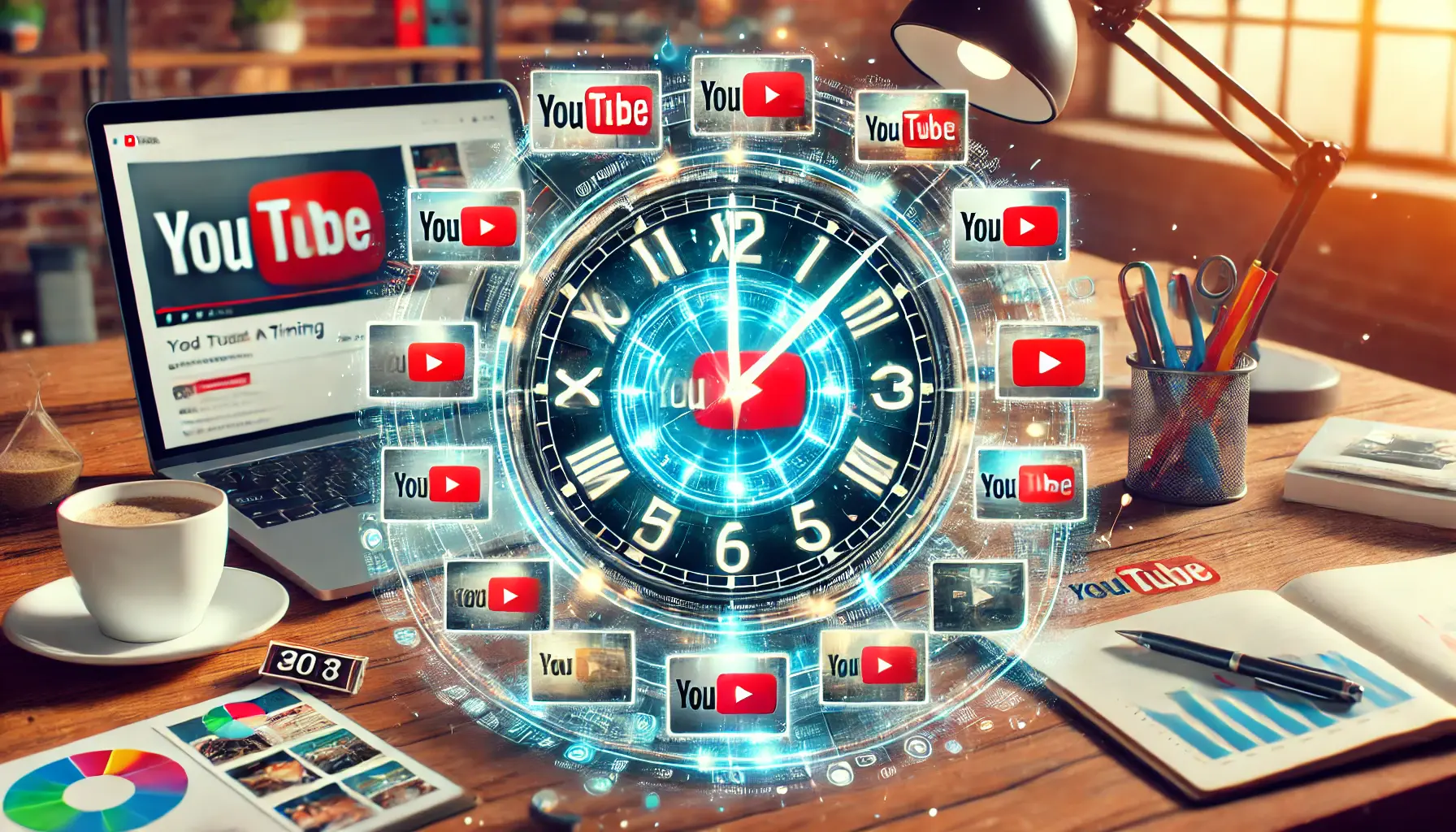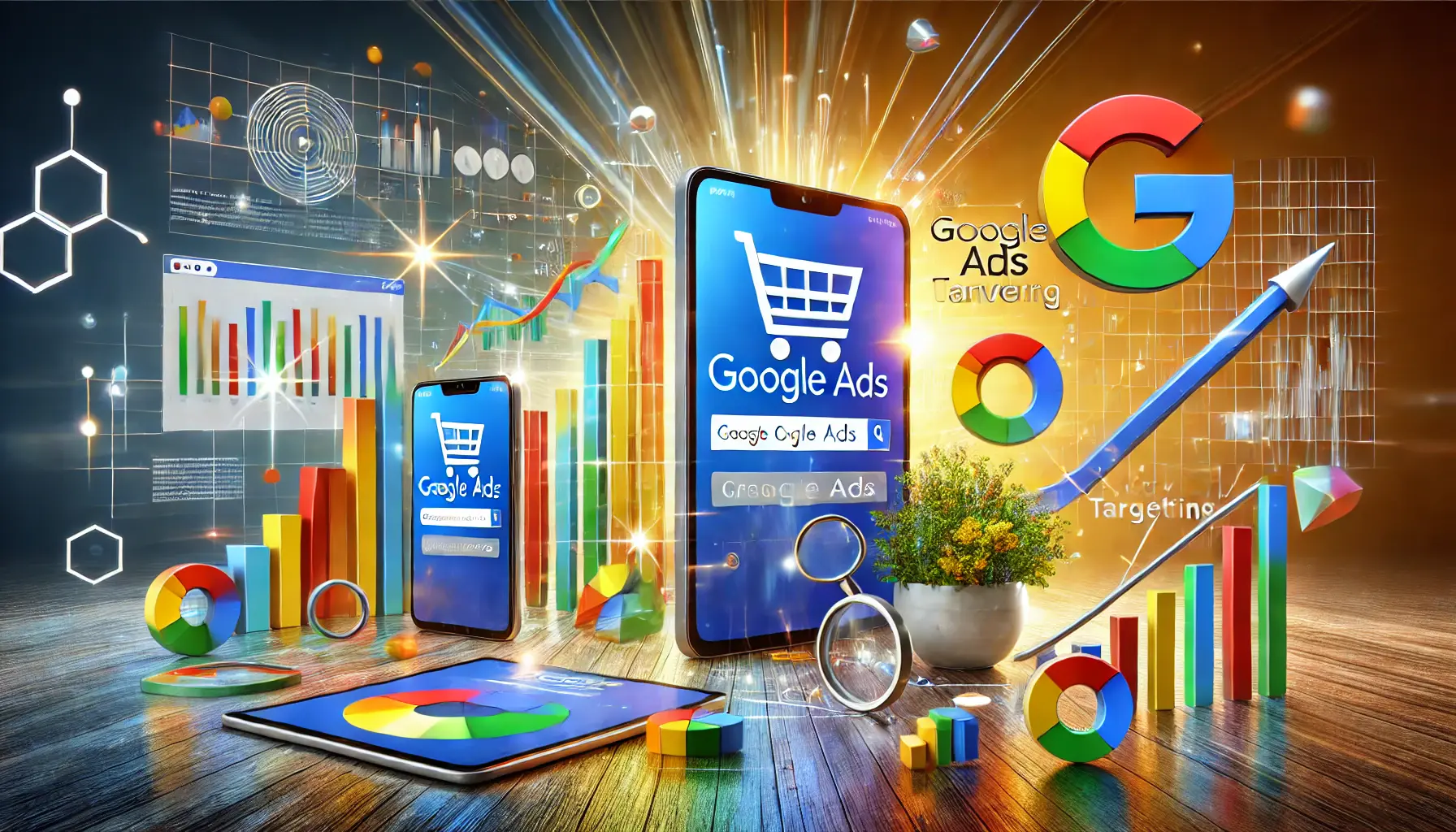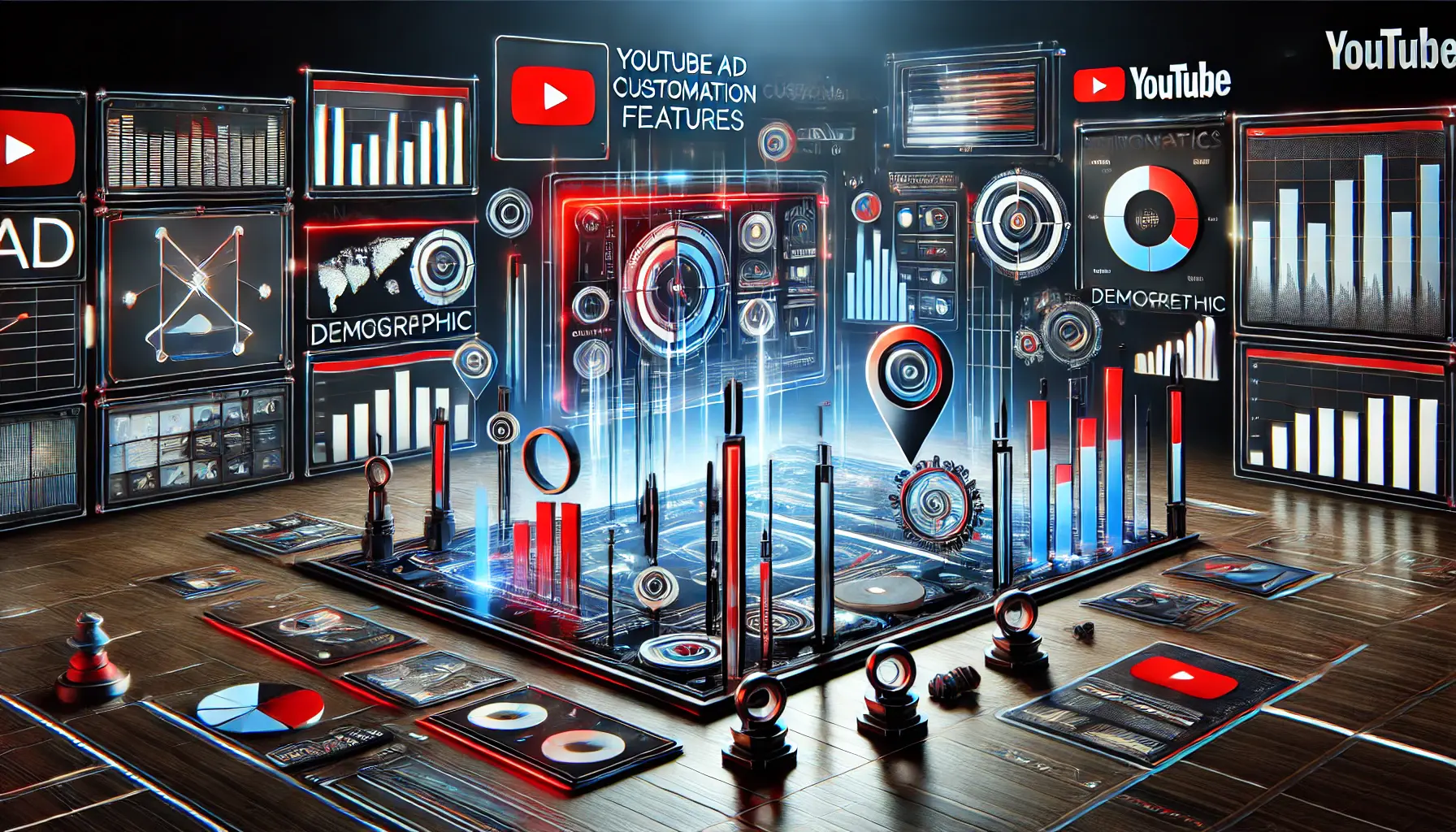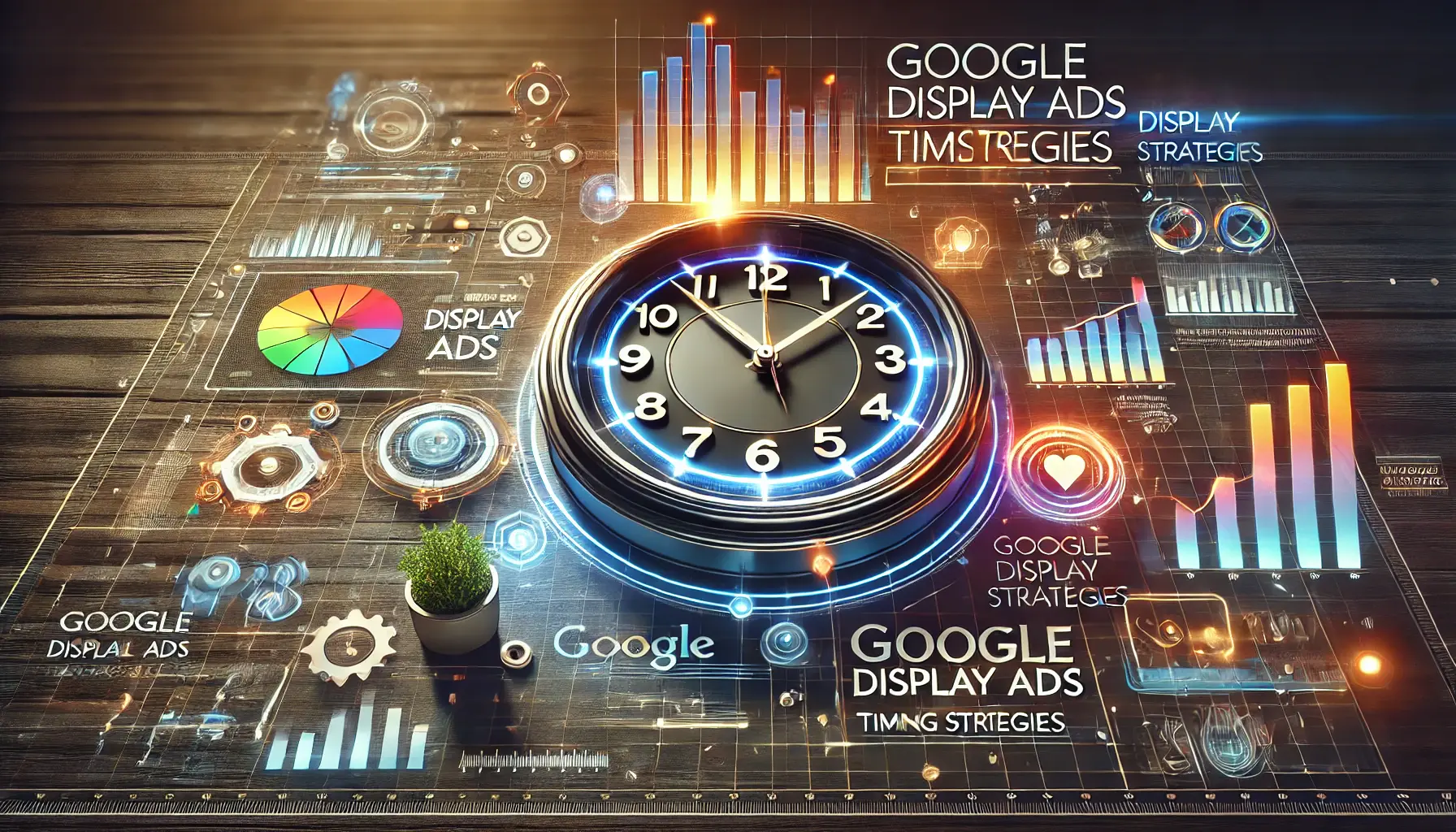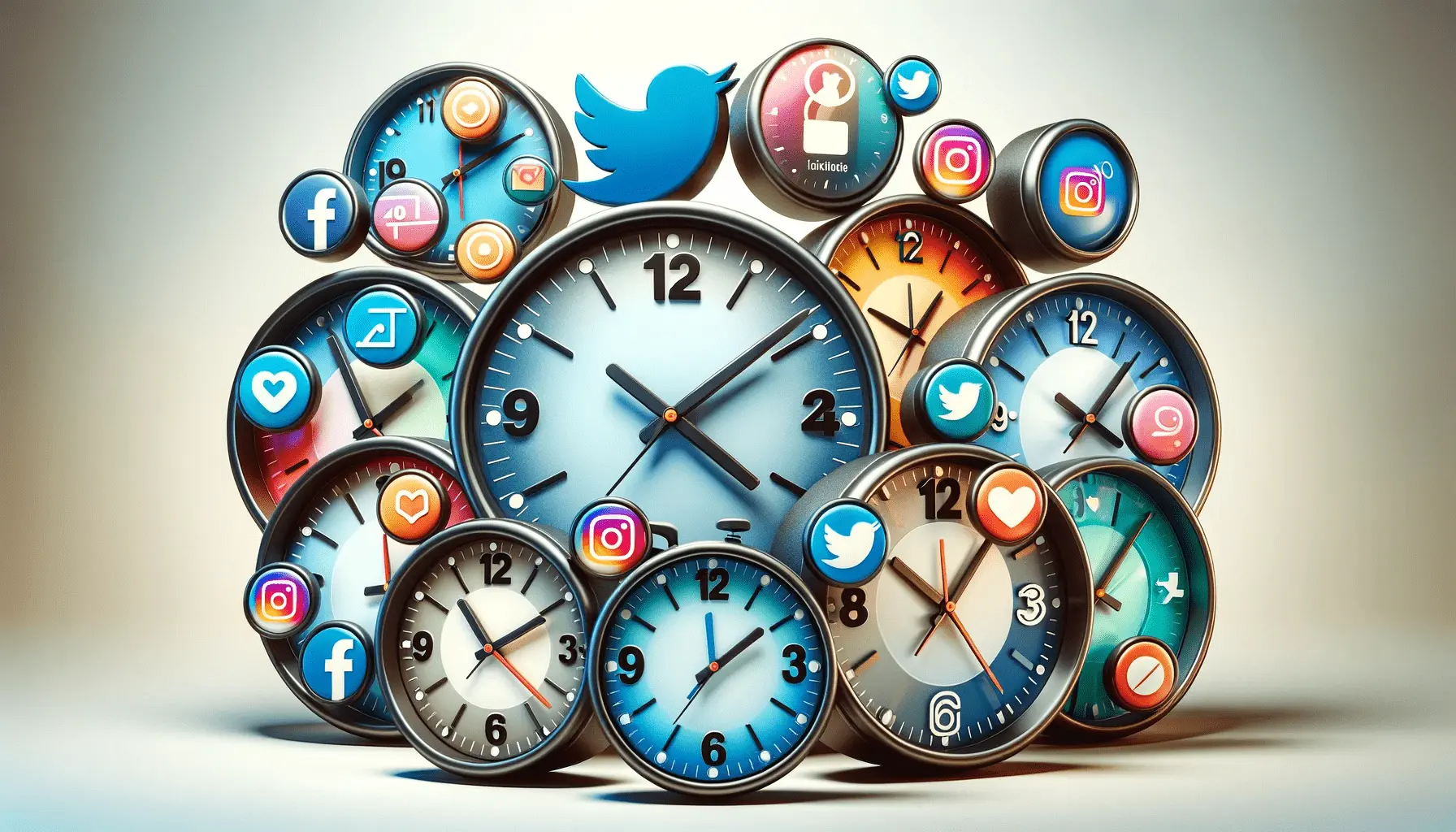YouTube has turned into one of the most powerful platforms for digital advertisers, offering unmatched reach and audience engagement.
Running a successful YouTube ad campaign is not just about creating great content.
The timing of your ads plays an important role in capturing viewers’ attention and driving conversions.
Mastering the secrets of ad timing can make all the difference in achieving your campaign goals.
In this article, we’ll uncover the most effective strategies to help you master ad timing for your YouTube campaigns.
- Why Ad Timing Matters for YouTube Campaigns
- The Best Times to Run YouTube Ads
- Ad Scheduling Capabilities of Google Ads on YouTube
- Common Mistakes in YouTube Ad Timing
- Tips to Perfect Your YouTube Ad Timing Strategy
- Mastering YouTube Ad Timing: Key Takeaways
- Frequently Asked Questions About YouTube Ad Timing
Why Ad Timing Matters for YouTube Campaigns
Ad timing is one of the most critical elements of a successful YouTube campaign.
It’s not just about when your ads run; it’s about strategically aligning your message with when your audience is most likely to engage.
This ensures your investment delivers maximum returns and reaches the right people at the right time.
Timing has a significant effect on viewer engagement.
YouTube videos are watched at different times of the day depending on routines, habits, and even moods.
Placing your ads during these key windows can help you connect with your audience when they’re most receptive.
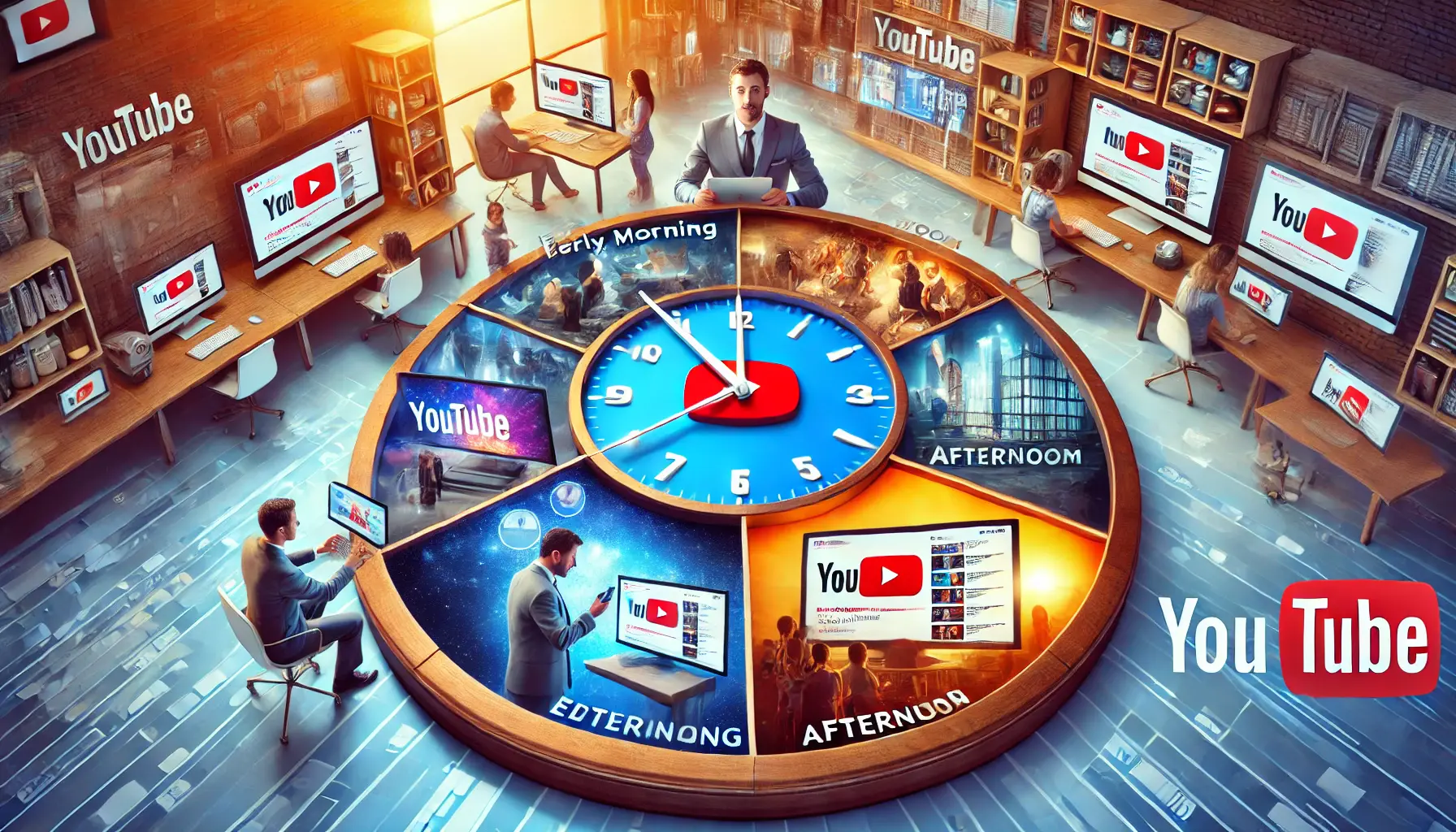
Illustration of the impact of timing on viewer engagement for YouTube campaigns.
Understanding the Impact of Timing on Viewer Engagement
Timing directly influences how viewers perceive and interact with your ad.
For example, an ad shown during prime viewing hours is more likely to gain attention than one aired late at night when most viewers have logged off.
By understanding your target audience’s behavior, you can schedule your ads during their most active hours.
- Early mornings often attract professionals catching up on news or tutorials.
- Afternoons may see students or casual viewers browsing for entertainment.
- Evenings are prime time for family and leisure viewers watching long-form content.
By aligning your ad schedule with these patterns, you ensure better engagement and higher conversion rates.
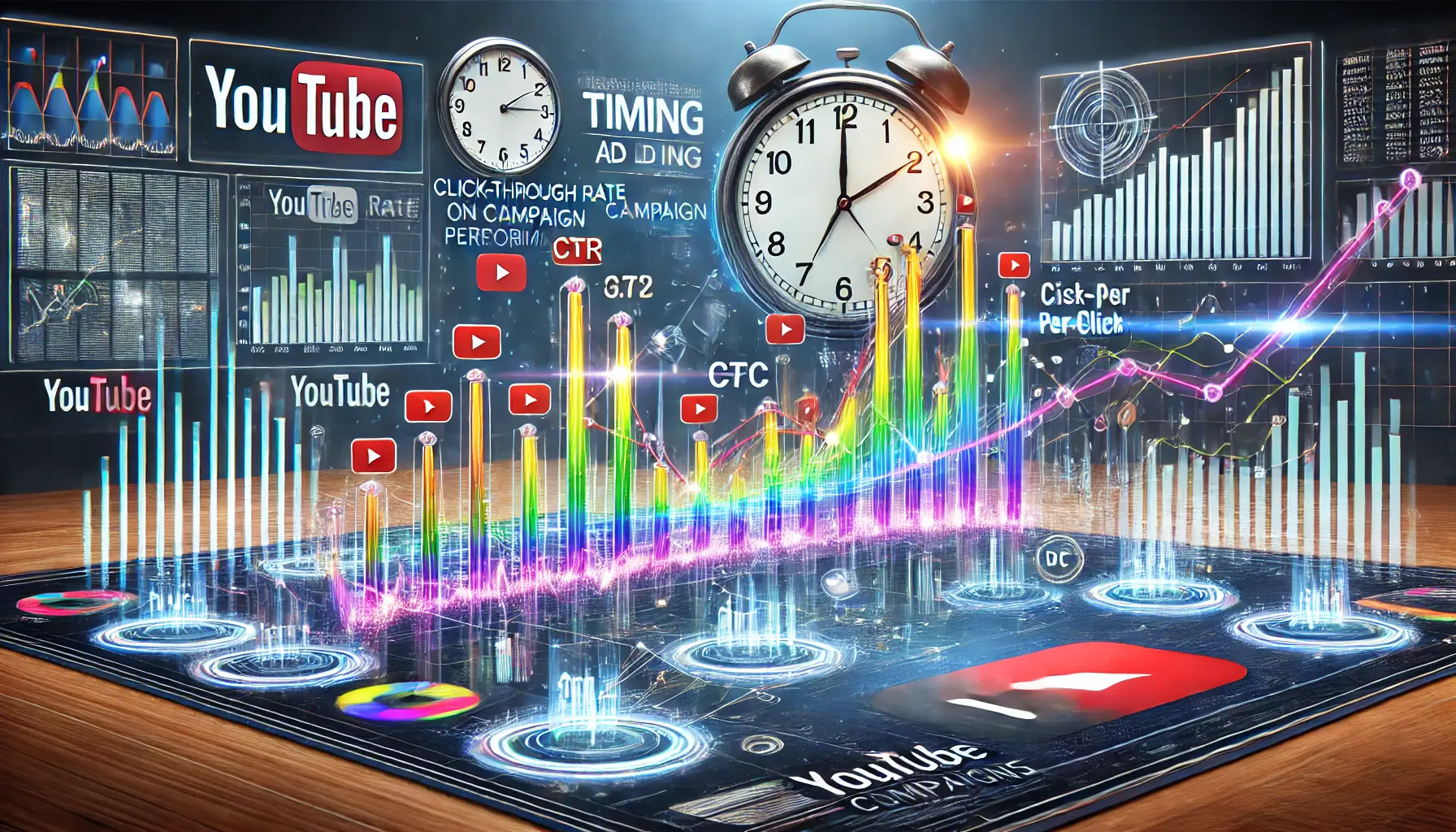
Illustration of the impact of ad timing on YouTube campaign performance metrics.
How Ad Timing Affects Campaign Performance Metrics
The timing of your ads doesn’t just influence clicks and views; it also affects critical performance metrics like click-through rates (CTRClick-Through Rate, a metric showing the percentage of viewers who click on an ad after seeing it.), cost-per-click (CPCCost-Per-Click, the amount paid by an advertiser each time their ad is clicked.), and conversion rates.
Running your ads during high-traffic hours might lead to increased competition, but it can also deliver better results if executed strategically.
For example:
- High-traffic hours can boost impressions but may increase CPC.
- Low-competition periods might lower CPC but could result in fewer conversions.
Balancing these factors ensures you get the most value from your YouTube ad budget while optimizing overall performance.
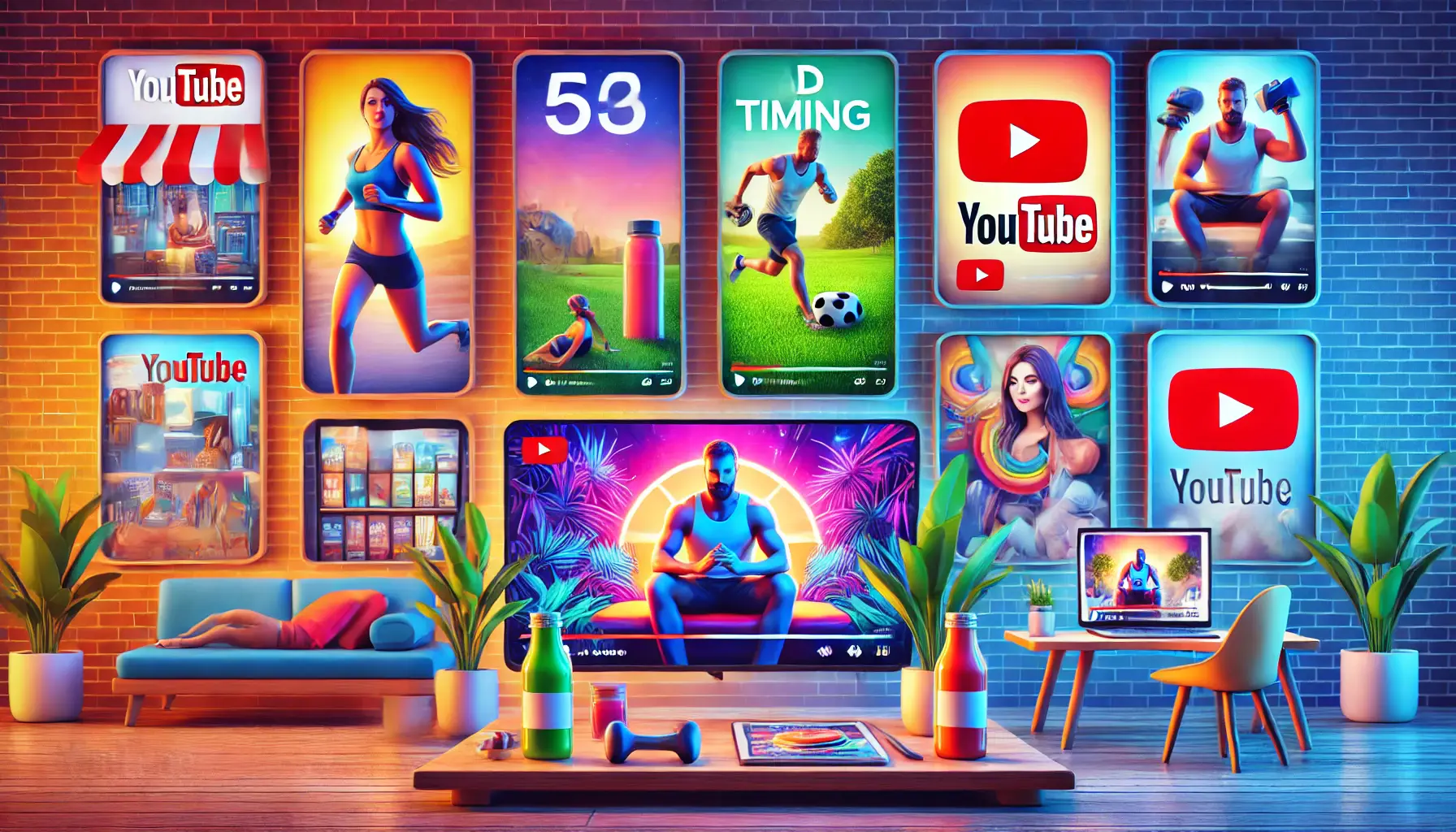
Illustration of successful YouTube ad timing strategies across different audiences and times.
Examples of Successful Ad Timing Strategies
Many advertisers have unlocked the power of ad timing by testing and refining their campaigns.
For example:
- A fitness brand targeting early risers saw a significant increase in clicks by running ads between 6 AM and 9 AM.
- A gaming company experienced a surge in downloads by focusing on evening hours, aligning with their audience’s leisure time.
- A beauty brand achieved higher engagement rates during weekends when viewers had more time to explore product tutorials.
These examples show that tailoring your timing strategy to your audience’s habits can make a world of difference.
Ad timing is critical for aligning your message with audience behavior, ensuring your campaigns deliver optimal engagement and ROIReturn on Investment, a measure of the profitability of an advertising campaign..
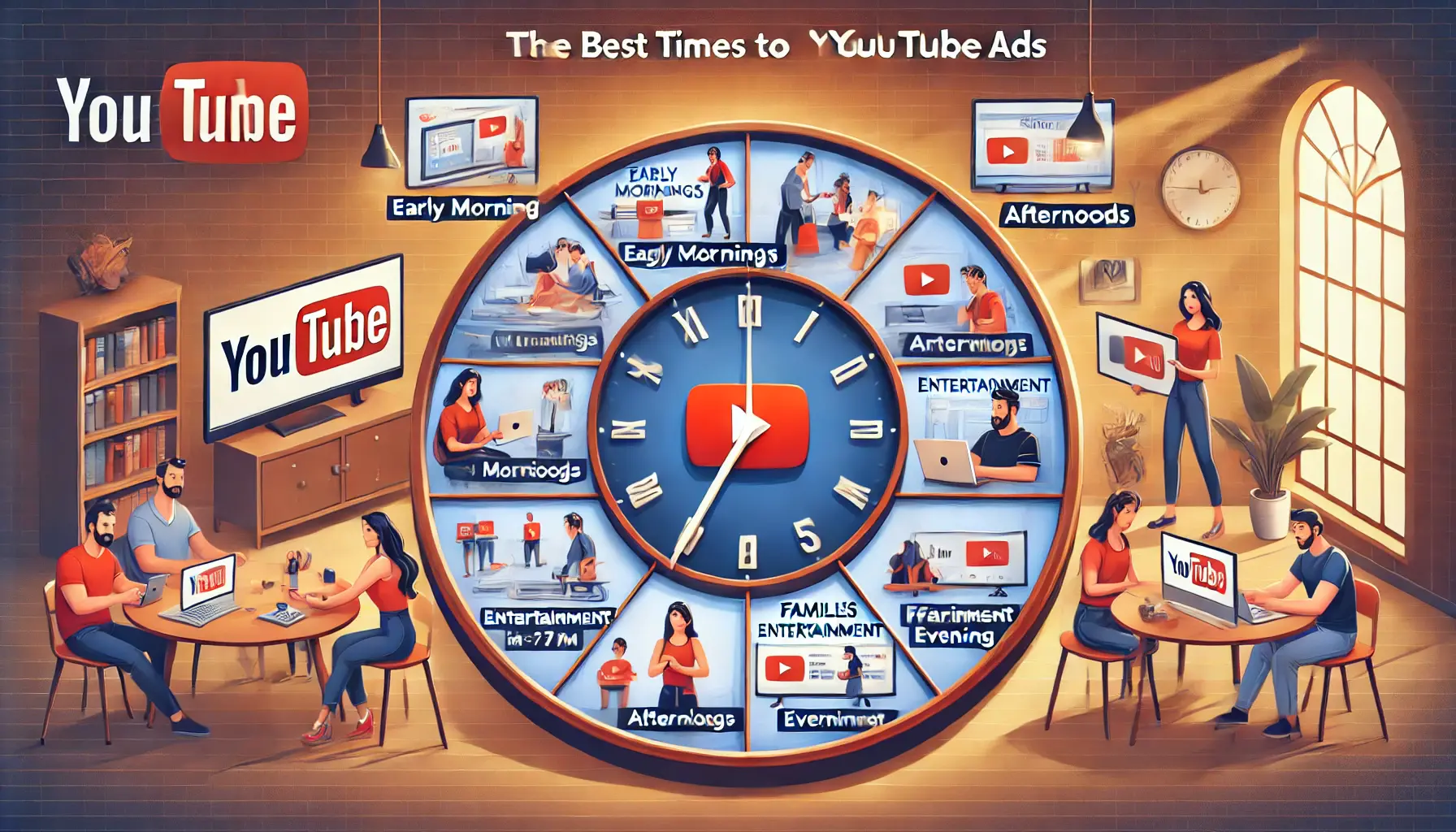
Illustration showing the best times to run YouTube ads based on audience behavior.
The Best Times to Run YouTube Ads
A good timing strategy for YouTube advertising makes a significant difference.
Understanding when your audience will be most active can elevate the success rate of your campaign.
Running ads at optimal times ensures higher conversion rates and better ROI.
Let’s explore the best times to run YouTube ads based on audience behavior and market trends.
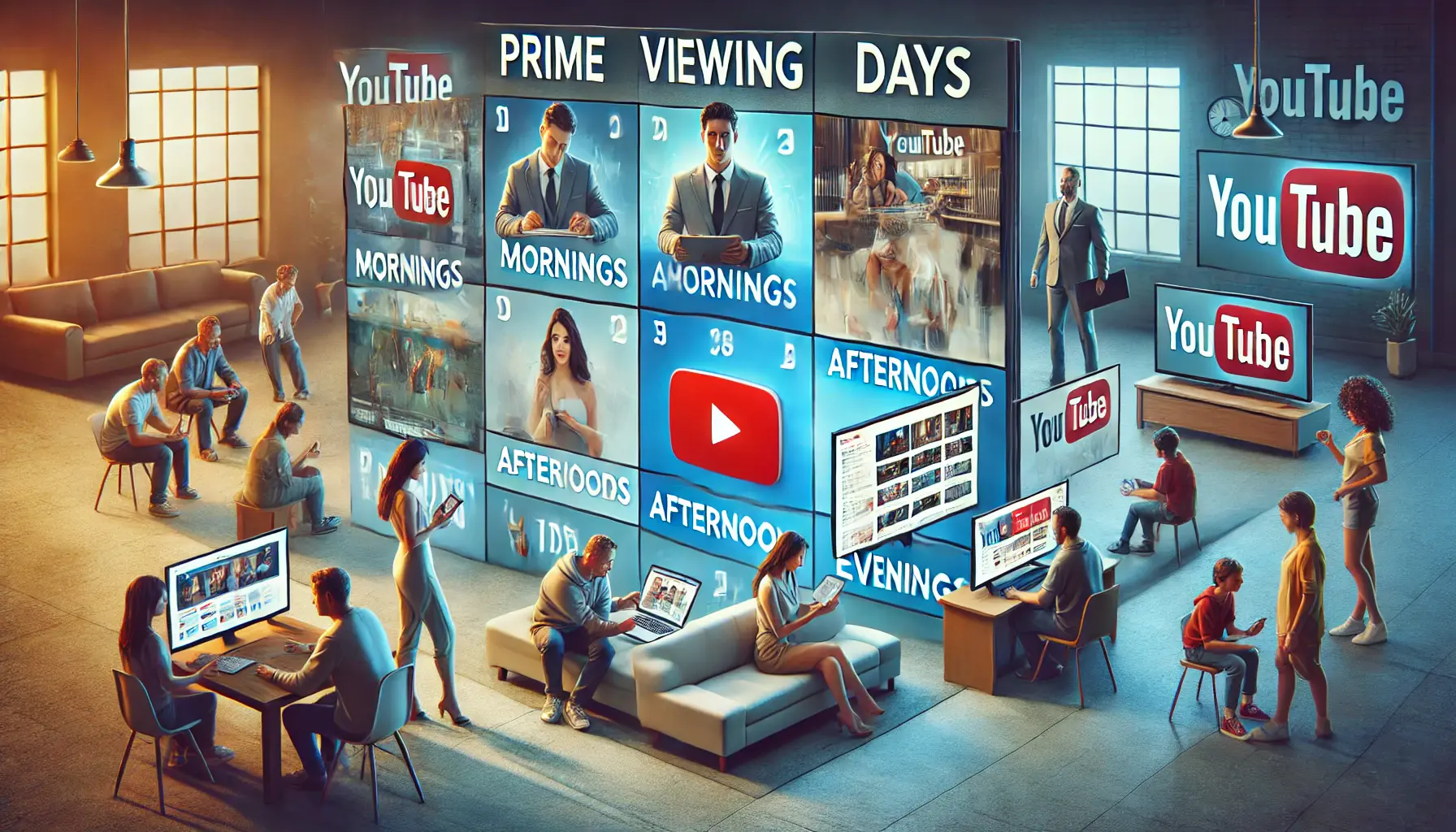
Illustration of prime viewing hours and days for YouTube ads based on audience behavior.
Prime Viewing Hours and Days for Your Target Audience
YouTube viewership tends to peak during certain hours of the day and specific days of the week.
These patterns vary depending on the audience you’re targeting:
- Weekday Evenings: Most viewers tune in after work or school, typically between 7 PM and 10 PM, making it a prime time for ads.
- Weekend Afternoons: Saturdays and Sundays between 12 PM and 4 PM often see high engagement rates as people have more leisure time.
- Morning Commutes: Ads targeting professionals or students can perform well between 6 AM and 9 AM during their morning routines.
Knowing these patterns helps you tailor your ad schedule to maximize impressions and engagement during high-traffic periods.
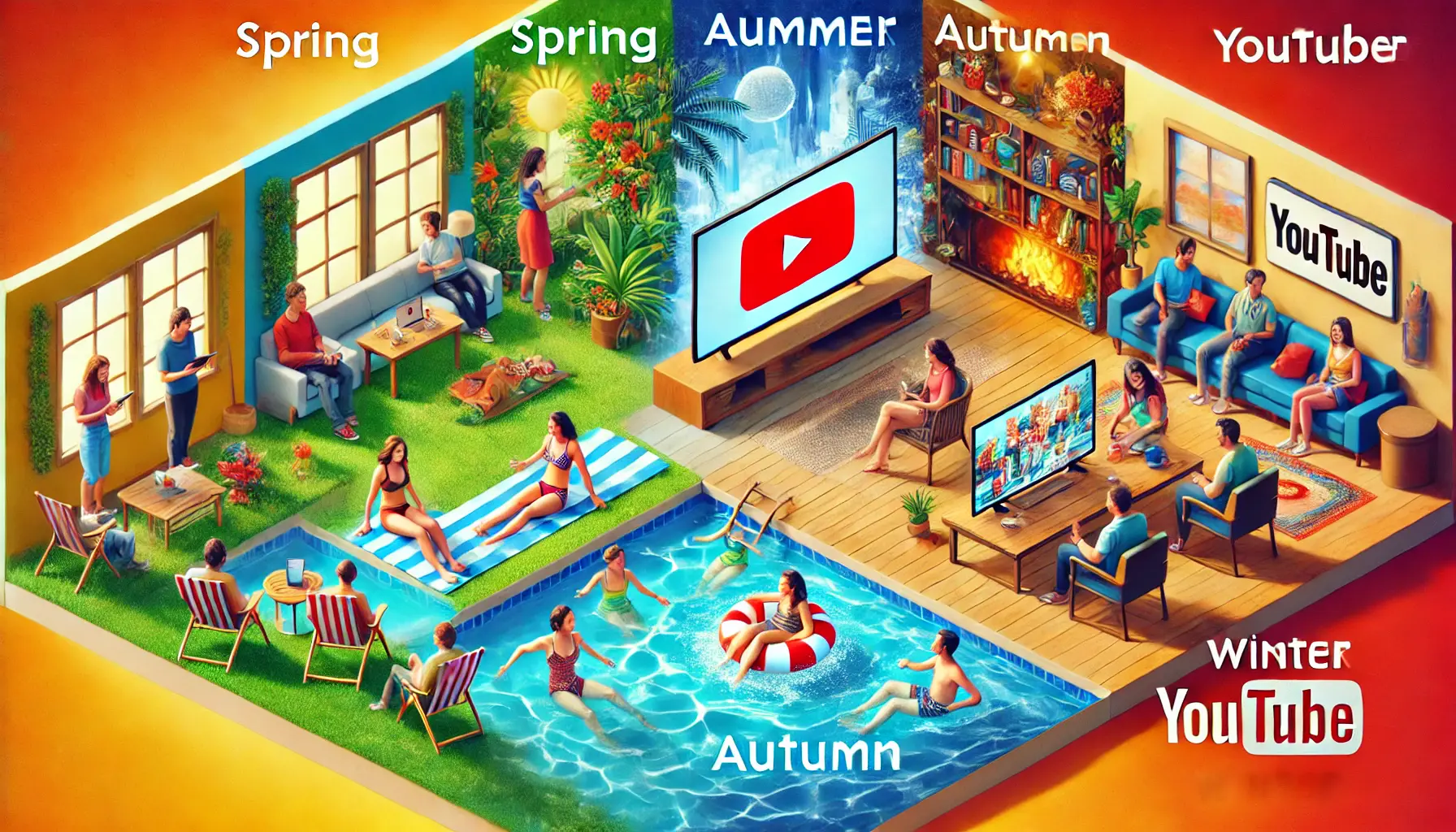
Illustration of how seasonal trends influence ad timing for YouTube campaigns.
Seasonal Trends and Their Influence on Ad Timing
Seasonality plays a crucial role in determining the best times to run YouTube ads.
Consumer behavior shifts during different times of the year, impacting how and when people engage with content:
- Holiday Seasons: Ads promoting gifts, travel, or holiday-related services see higher engagement in November and December.
- Back-to-School Period: Late July to early September is ideal for targeting students and parents with educational or school-related products.
- Summer Months: Leisure and travel content tends to perform better during vacation periods when audiences are planning trips or enjoying free time.
Adapting your campaigns to these seasonal trends ensures relevance and boosts your chances of success.

Illustration showing the importance of time zones in global ad campaigns.
The Role of Time Zones in Global Campaigns
If your campaign targets a global audience, accounting for different time zonesRegions of the Earth that have the same standard time, essential for global ad scheduling. is essential.
For instance, an ad scheduled for 9 AM in New York may reach a viewer in Los Angeles at 6 AM, which may not be ideal.
To optimize global campaigns:
- Leverage YouTube’s ad scheduling features to tailor time slots for different target areas.
- Conduct tests to highlight times of maximum engagement in specific countries or regions.
- Create various ad versions tailored to different time zones when necessary.
These strategies help ensure your ads reach the right audience at the right times across borders.
By considering insights into viewing habits, seasonal trends, and time zone issues, you can create a significantly better timing strategy for your YouTube ad campaign, ultimately enhancing its overall performance.
- Weekday evenings: 7 PM to 10 PM.
- Weekend afternoons: 12 PM to 4 PM.
- Morning commutes: 6 AM to 9 AM.
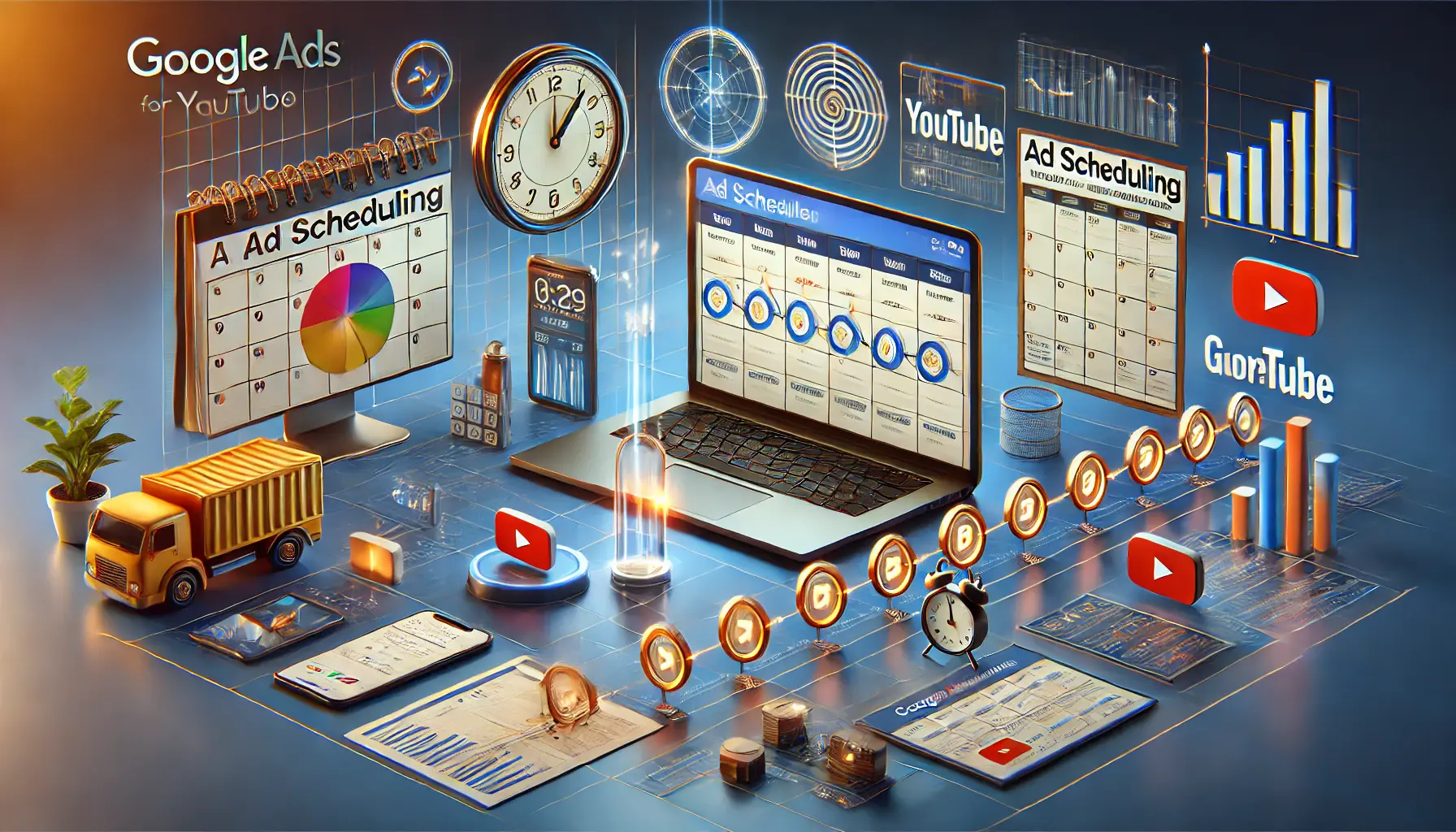
Illustration of ad scheduling capabilities for YouTube campaigns using Google Ads.
Ad Scheduling Capabilities of Google Ads on YouTube
Ad scheduling can be optimized while running YouTube campaigns on Google Ads with its powerful tools.
These features help advertisers run their ad content at the most productive times for better reach and effective engagement.
You gain an opportunity to refine your campaign timing, ultimately achieving higher ROI through these tools.
Let’s explore the key ad scheduling features and how to use them effectively.
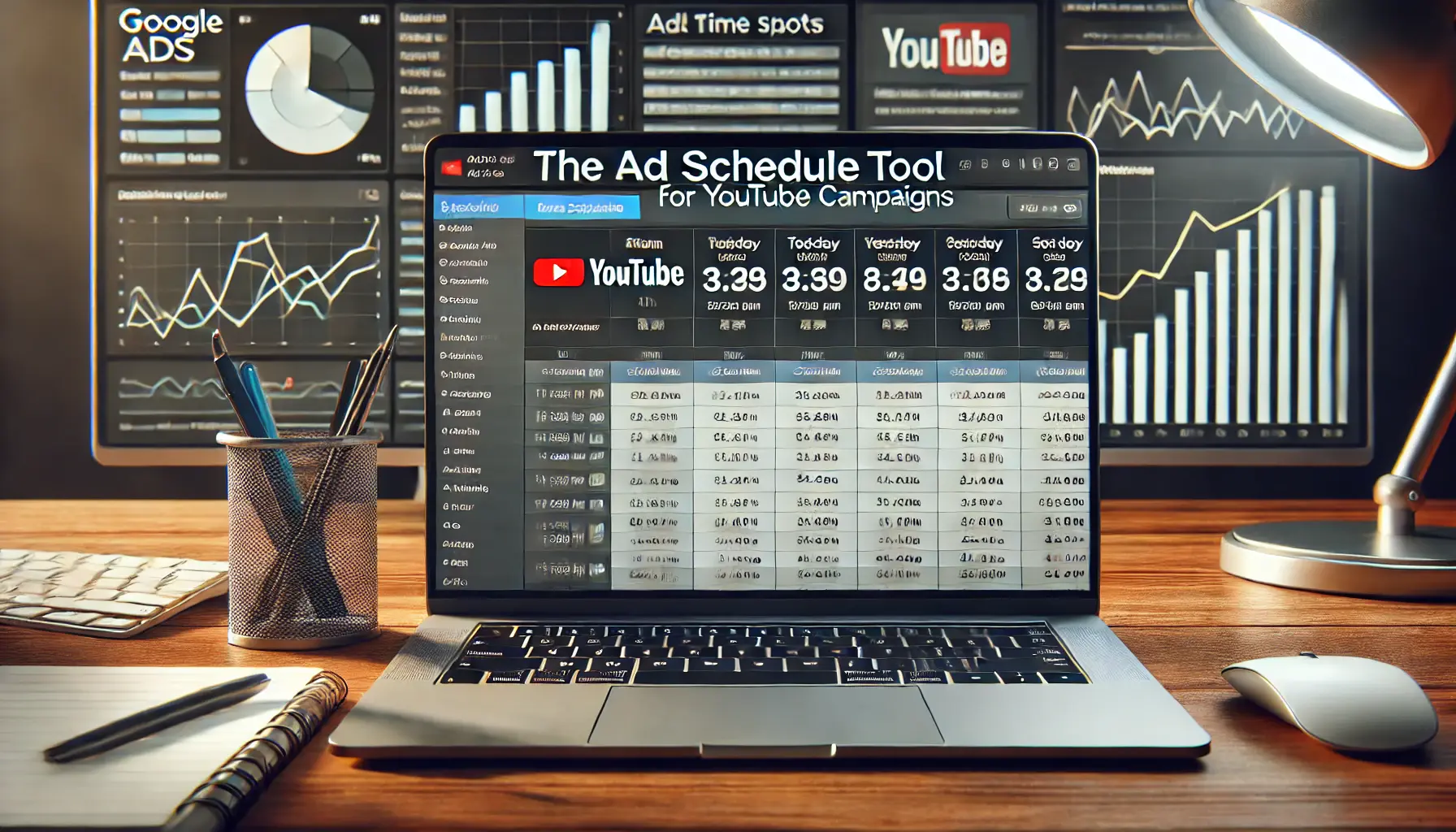
Illustration of effectively using the Ad Schedule tool for YouTube campaigns.
Using the Ad Schedule Tool Effectively
The Ad Schedule tool in Google Ads is a powerful feature that allows you to specify exactly when your ads should run.
This tool helps you avoid wasting your budget on times when your audience is less active.
Here’s how you can use it:
- Analyze your audience data to identify peak activity times.
- Create a custom schedule that aligns with these times, ensuring your ads run when viewers are most engaged.
- Regularly review performance metrics and adjust your schedule as needed.
By taking a data-driven approach, you can ensure your ads are displayed at optimal times, maximizing their impact.
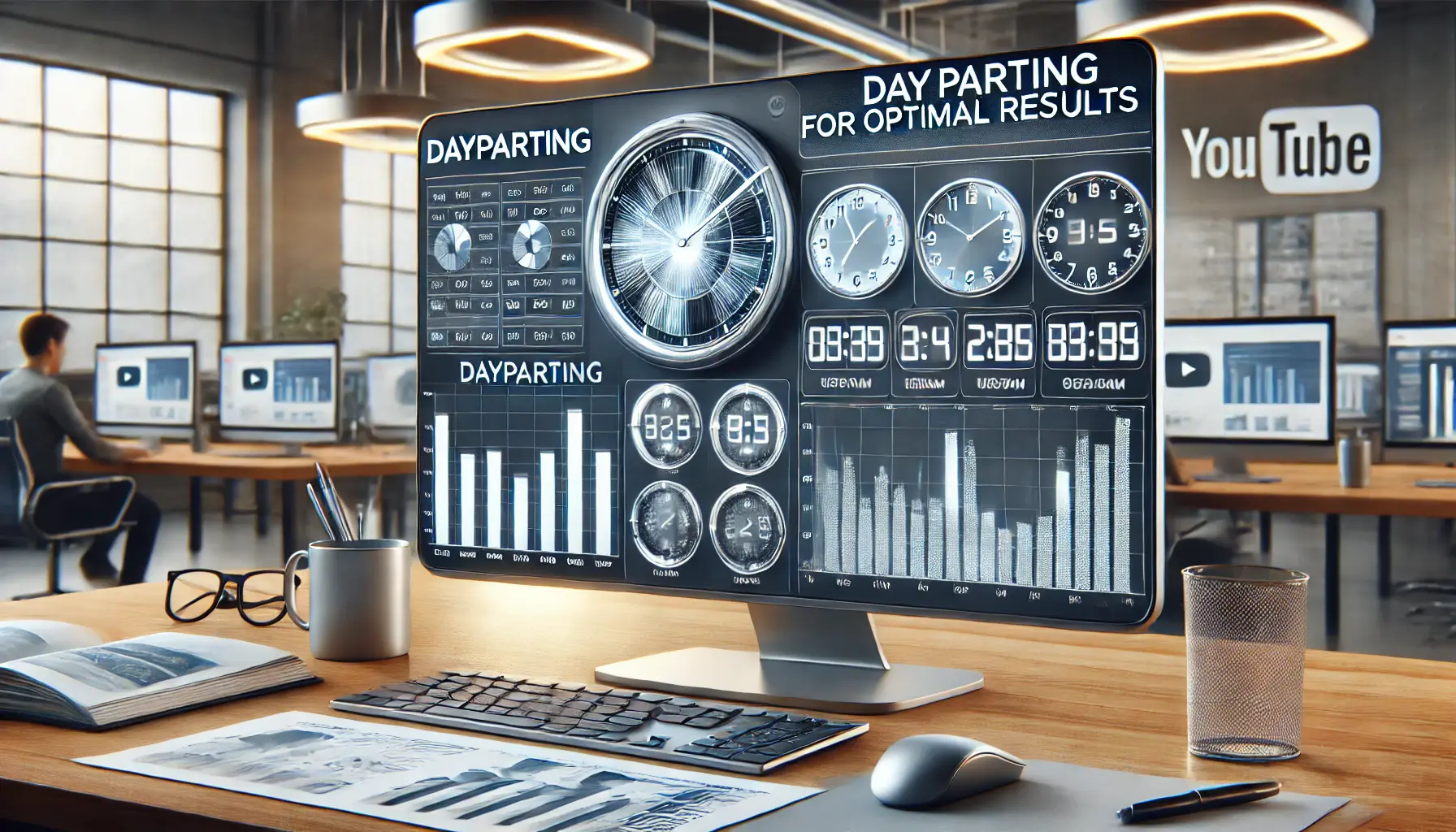
Illustration of setting up dayparting for optimal results in YouTube ad campaigns.
Setting Up Dayparting for Optimal Results
Dayparting is an advanced scheduling strategy that enables advertisers to run ads during specific hours of the day or days of the week.
This approach is particularly useful for reaching niche audiences or aligning with specific time-sensitive goals.
To implement daypartingAn advanced ad scheduling strategy that allows advertisers to target specific hours or days for their ads. effectively:
- Segment your target audience by their viewing habits and time preferences.
- Set different bidding strategies for various time slots to allocate your budget efficiently.
- Test and refine your dayparting strategy to identify the most profitable time frames.
Dayparting ensures that your ad spend is focused on periods with the highest potential for conversions, improving your campaign’s overall performance.
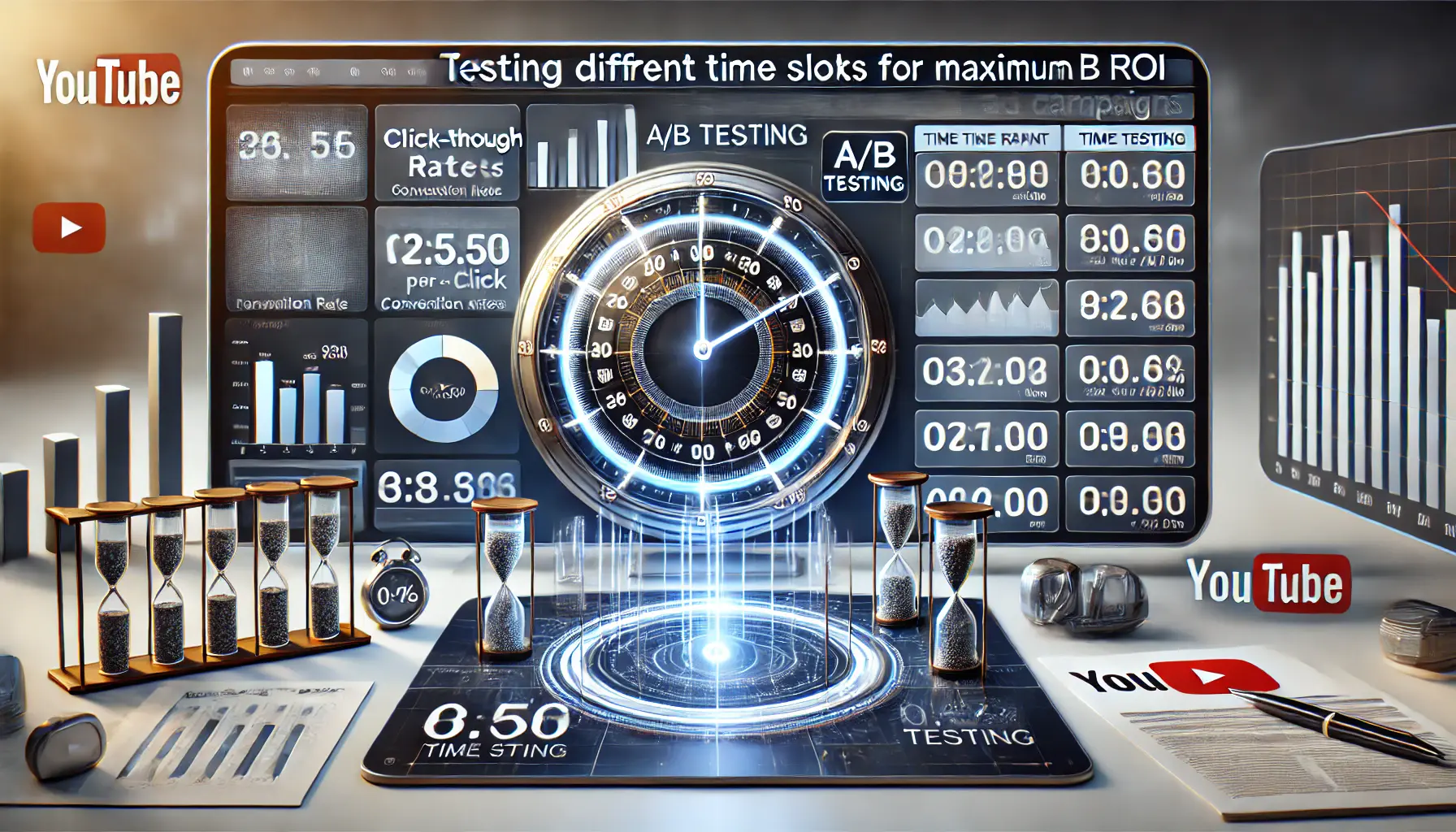
Illustration of testing different time slots for maximum ROI in YouTube ad campaigns.
Testing Different Time Slots for Maximum ROI
One of the best ways to optimize your YouTube ad timing is through A/B testing.
This process involves running ads at different time slots and comparing their performance to identify the most effective timing.
Here’s how to conduct effective A/B tests:
- Select a few time slots based on preliminary audience data.
- Run identical ad creatives in these time slots over a set period.
- Evaluate key performance metrics, including click-through rates, conversion rates, and cost-per-click.
- Identify the most successful time slots and adjust your schedule accordingly.
Testing allows you to eliminate guesswork when creating a schedule and ensures your campaigns perform better by relying on real-world data.
The ad scheduling features of Google Ads give you complete control over your YouTube campaigns.
Whether you’re utilizing the Ad Schedule tool, implementing dayparting, or testing time slots, these strategies ensure you reach your audience at the right time and maximize your ad’s potential.
Google Ads offers tools to refine your ad timing, ensuring your content reaches the audience during peak engagement periods.
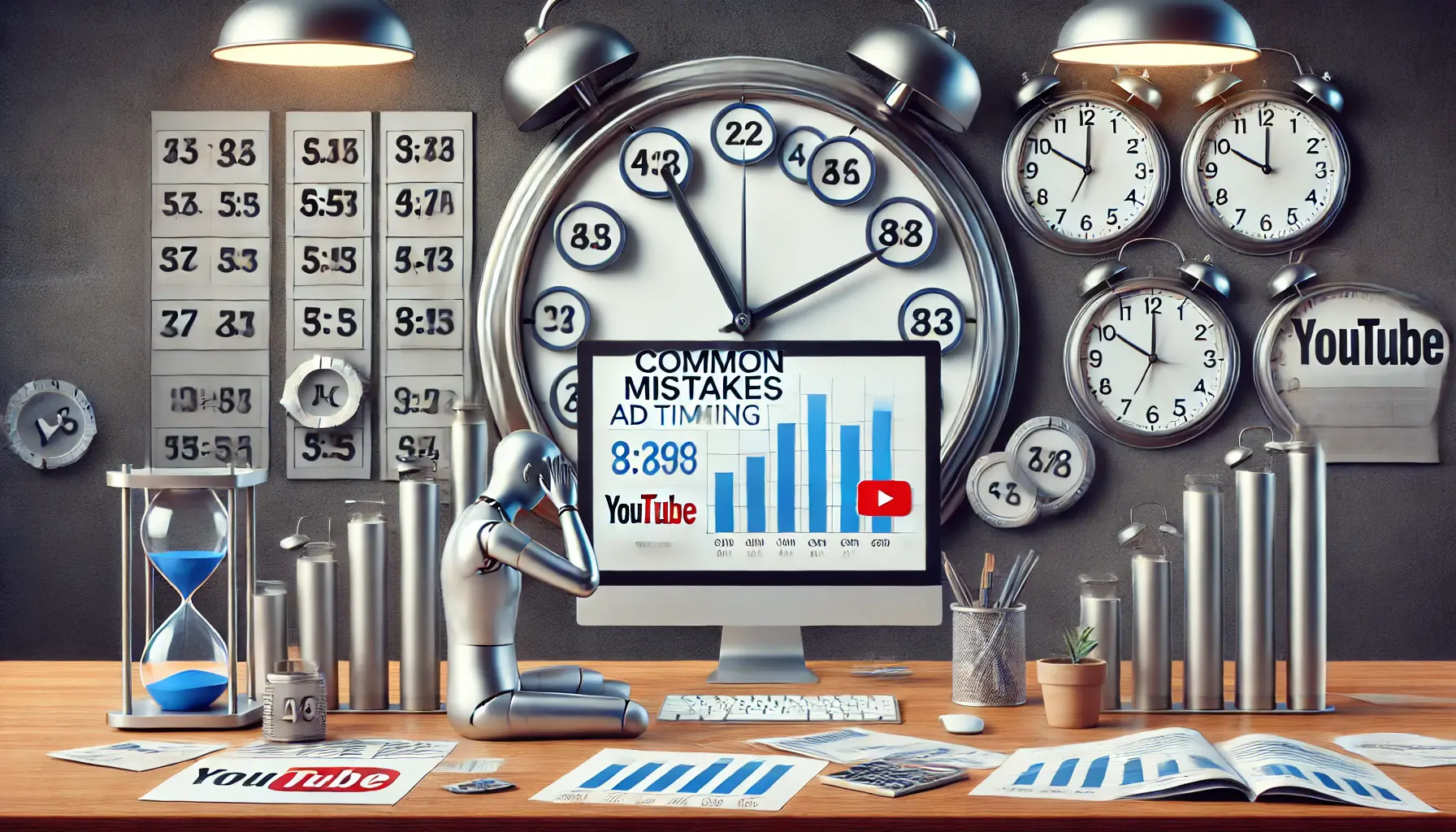
Illustration of common mistakes in YouTube ad timing and their impact on performance.
Common Mistakes in YouTube Ad Timing
Ad timing is one of the most important factors that can make or break your YouTube campaigns.
However, many advertisers make some common mistakes that hold them back and waste their budgets.
To maximize ad performance, these mistakes should be avoided to ensure your campaigns bring in the desired results.
Let’s examine some of the most common mistakes in YouTube ad timing and how to address them.
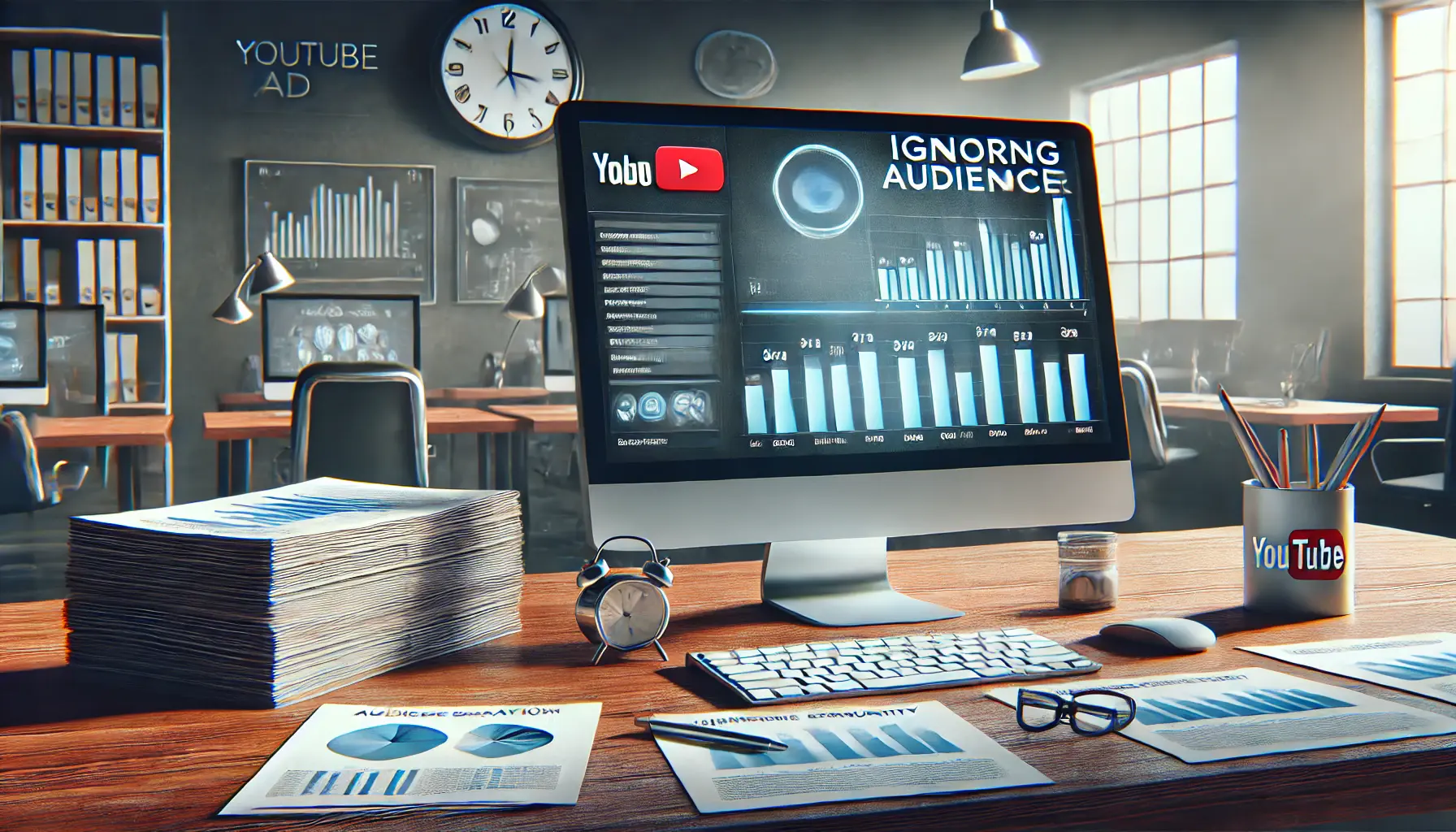
undefined
Ignoring Audience Behavior Data
One of the most significant mistakes advertisers make is neglecting to analyze audience behavior data.
Understanding when your target audience is most active and engaged is crucial to scheduling your ads effectively.
Relying on generic assumptions instead of concrete data can lead to poorly timed ads and reduced engagement.
- Use analytics tools to gather insights on your audience’s viewing patterns.
- Monitor key metrics such as watch time, peak hours, and geographic trends.
- Adjust your ad schedule based on this data to align with audience habits.
Leveraging accurate data ensures your ads reach viewers when they’re most likely to interact.
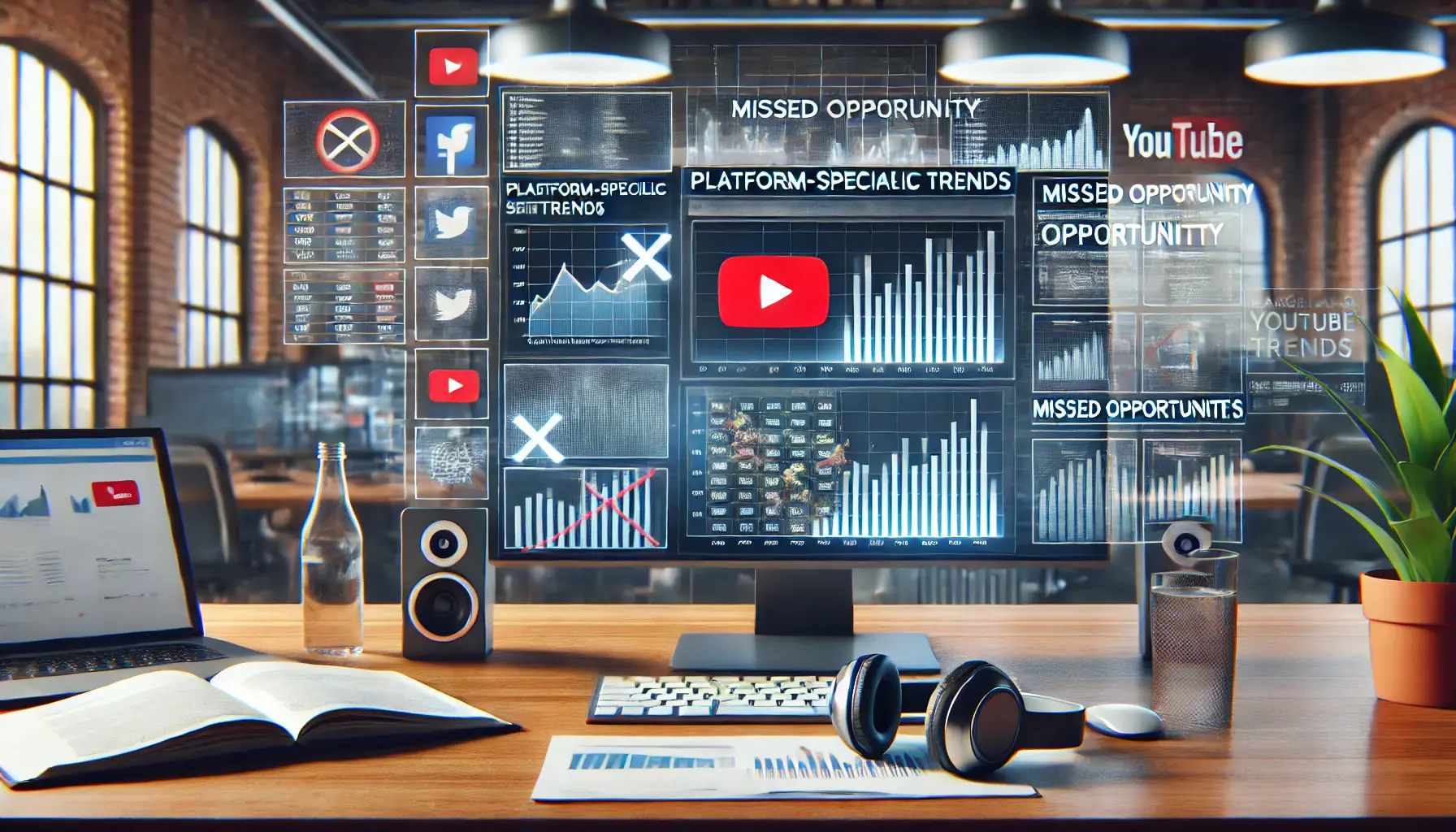
Illustration of overlooking platform-specific trends and its impact on YouTube ad campaigns.
Overlooking Platform-Specific Trends
Another common mistake is failing to account for YouTube-specific trends.
Unlike other platforms, YouTube has unique viewing habits and content preferences that can drive ad performance.
Advertisers who overlook these trends risk missing opportunities to optimize their campaigns.
- Research YouTube-specific trends such as peak upload times and content categories with high engagement.
- Tailor your ad timing strategy to complement these trends for better results.
- Stay updated on platform updates and changes that might affect ad performance.
Understanding YouTube’s ecosystem is key to maximizing your ad’s visibility and impact.
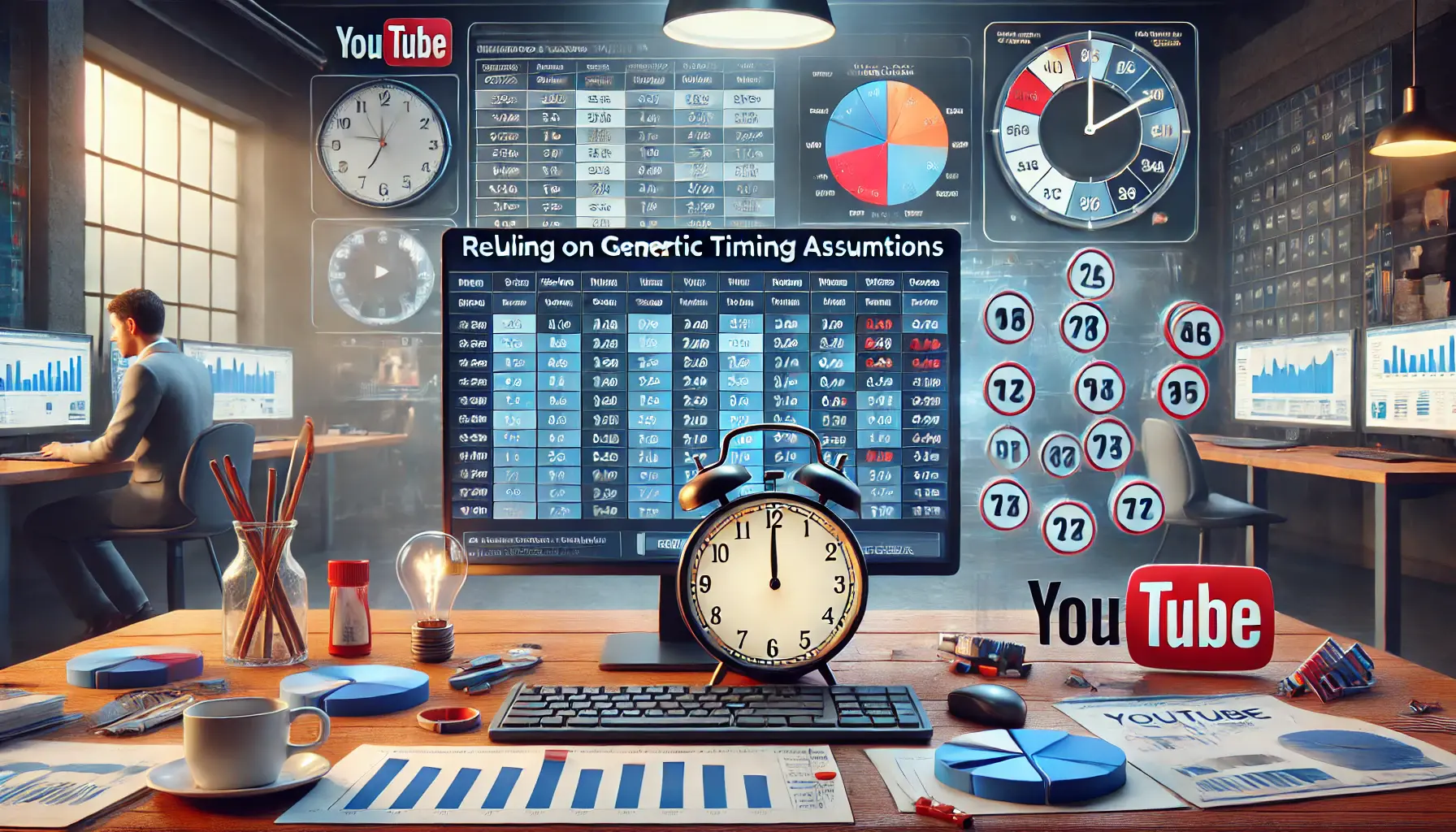
Illustration of relying on generic timing assumptions and its impact on YouTube ad campaigns.
Relying on Generic Timing Assumptions
Many advertisers rely on generic timing assumptions, such as running ads during traditional business hours or avoiding late-night slots.
While these may work for some campaigns, they don’t consider the varied viewing habits of YouTube’s global audience.
- Perform A/B testing to find out what works for your campaign.
- Experiment with unconventional timings, such as early mornings or late nights, when others might not be targeting.
- Use data-driven insights to challenge traditional beliefs and further optimize your strategy.
Moving away from generalized assumptions will let you uncover unique opportunities to connect with your audience.
Identifying and avoiding these common mistakes is essential to creating more efficient YouTube ad campaigns.
By paying attention to audience behavior, platform-specific trends, and data-driven strategies, your ads can be timed perfectly for maximum engagement and return on ad spend.
- Ignoring audience behavior data.
- Overlooking platform-specific trends.
- Relying on generic assumptions.

Illustration of relying on generic timing assumptions and its impact on YouTube ad campaigns.
Tips to Perfect Your YouTube Ad Timing Strategy
Timing perfectly can be a game-changing feat for the success of any campaign on YouTube.
Done correctly, it can maximize audience engagement and effectively help you achieve your campaign goals.
By leveraging data-driven insights and creative tactics, you can refine ad timing to best meet the behavior of your target audience.
Let’s explore some actionable tips to master your YouTube ad timing strategy.
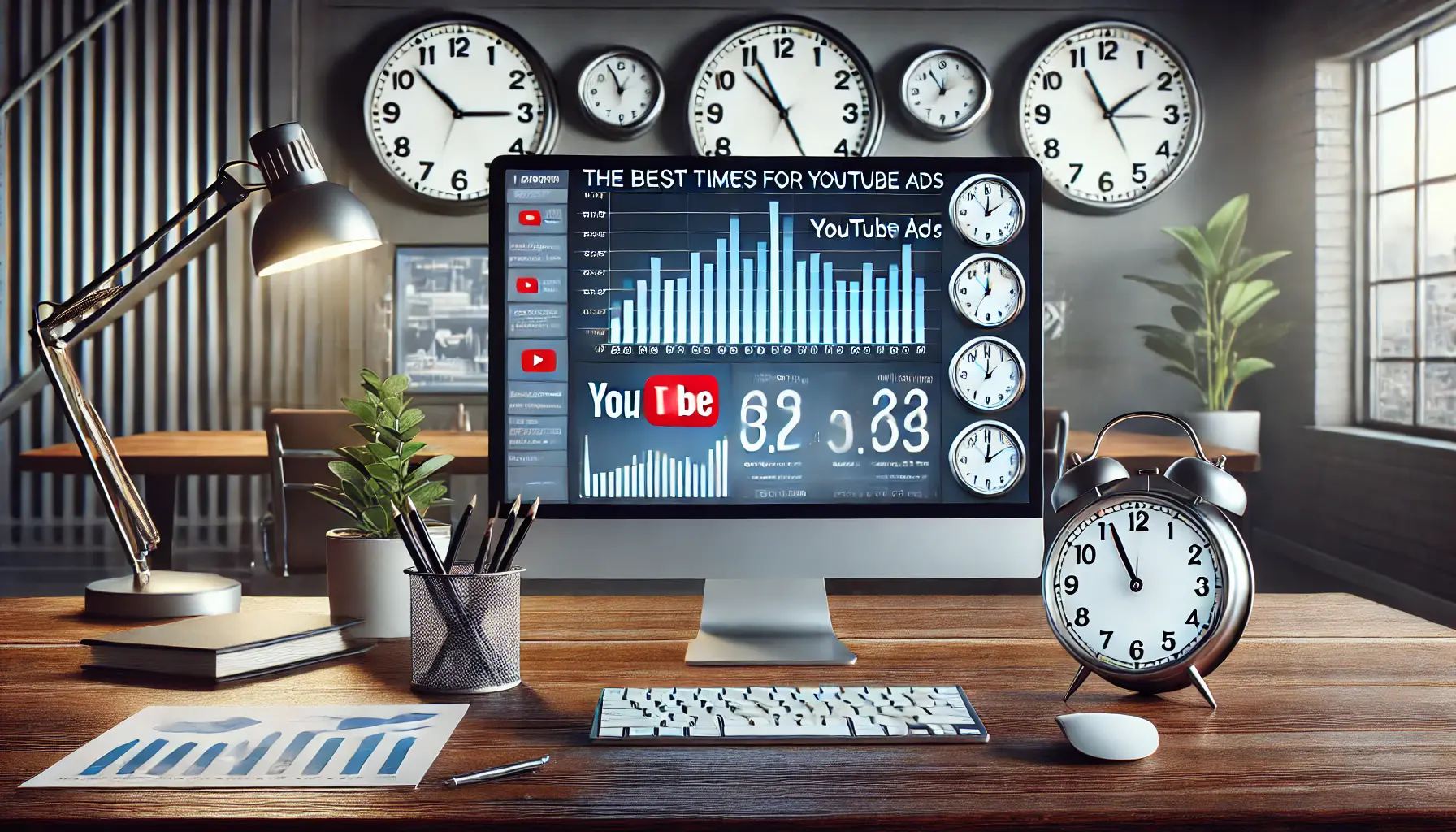
Illustration of using analytics to determine the best times for YouTube ads.
Leveraging Analytics to Determine the Best Times
Data is the cornerstone of a successful ad timing strategy.
YouTube offers detailed analytics that can help you understand your audience’s viewing habits.
Use these insights to identify peak engagement periods and tailor your campaigns accordingly:
- Monitor YouTube Analytics to track when your videos receive the most views and engagement.
- Analyze demographic data to understand how different audience segments behave at various times.
- Use Google Ads reports to compare performance metrics across different time slots.
By aligning your ad schedule with data-backed insights, you can ensure your ads are shown when they’re most likely to resonate with viewers.
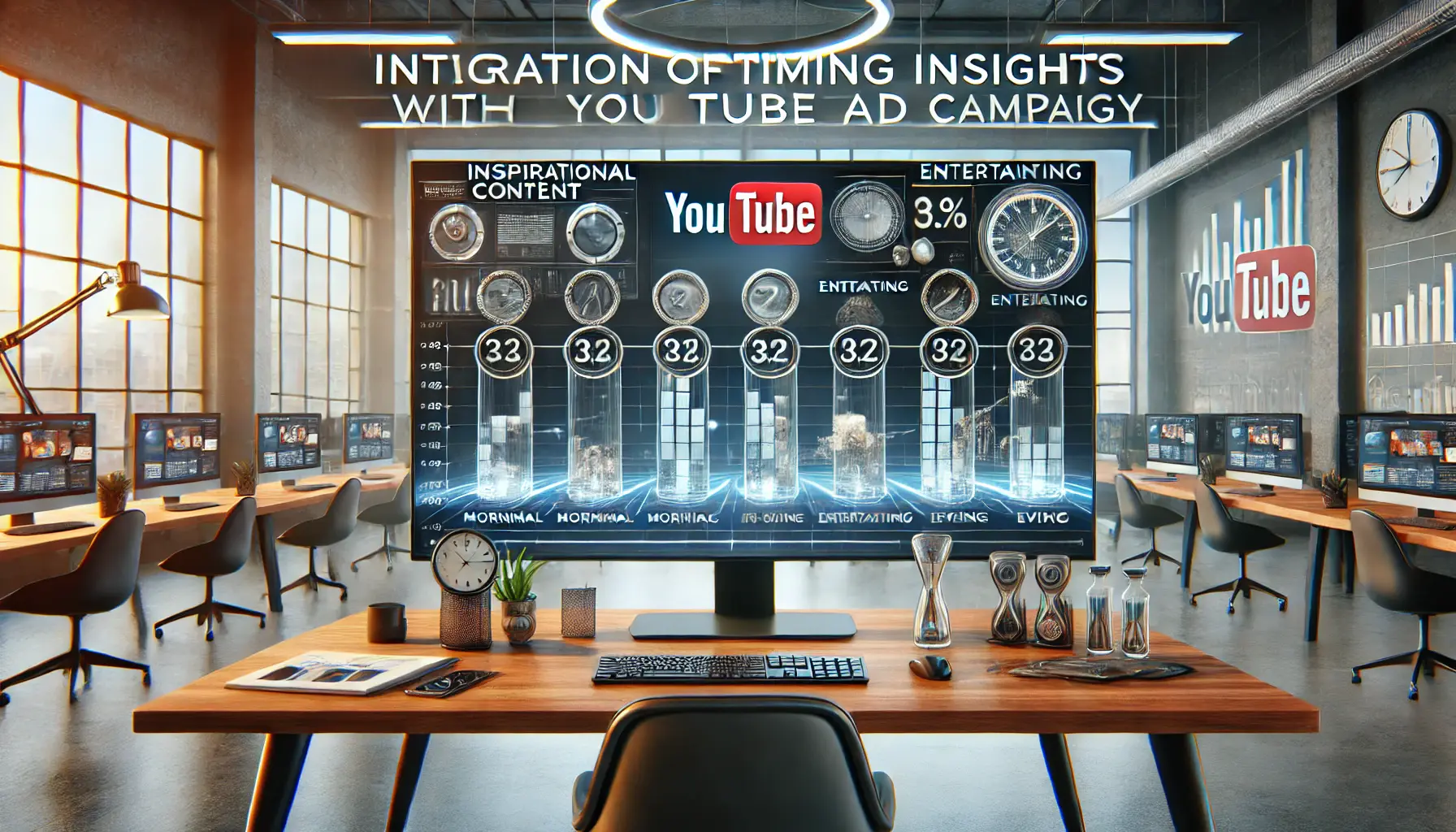
Illustration of integrating timing insights with content strategy for YouTube ad campaigns.
Integrating Timing Insights with Content Strategy
Successful ad timing isn’t just about when your ads run—it’s also about what they deliver.
By incorporating timing insights into your content strategy, you can make your ads more relevant and effective:
- Create different content for different times of the day, such as inspirational ads in the morning or entertaining ads in the evening.
- Leverage seasonal trends to produce timely and relevant messages that resonate with your audience.
- Adjust your messaging to capture audience needs during periods of high engagement.
Timing insights coupled with great content make your ads much more effective and engaging.
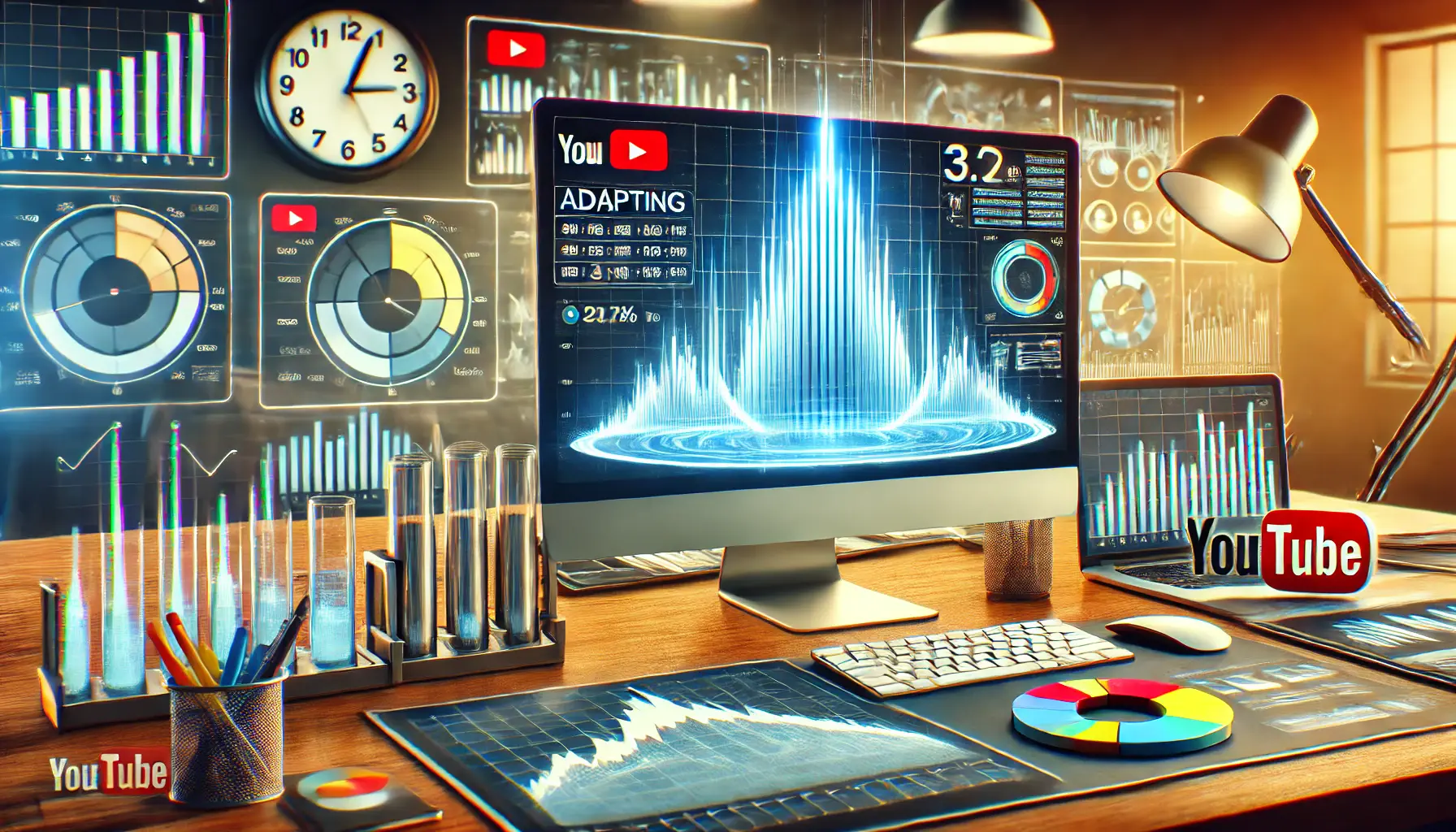
Illustration of adapting to changes in viewer behavior for YouTube ad campaigns.
Adapting to Changes in Viewer Behavior
Viewer behavior changes over time, influenced by trends, holidays, and external events.
Staying adaptable is key to maintaining the effectiveness of your ad timing strategy:
- Regularly review analytics to track changes in audience behavior.
- Experiment with new time slots or scheduling patterns to discover untapped opportunities.
- Stay updated on YouTube’s latest features and tools to optimize your campaigns.
Flexibility ensures your strategy remains effective even as viewer habits shift.
By leveraging analytics, integrating timing with content, and adapting to behavioral changes, you can perfect your YouTube ad timing strategy.
These tips not only help you achieve higher engagement but also make your campaigns more efficient, driving better results and ROI.
- Leverage YouTube Analytics for peak engagement insights.
- Align timing with content relevance.
- Adapt to seasonal and viewer behavior shifts.
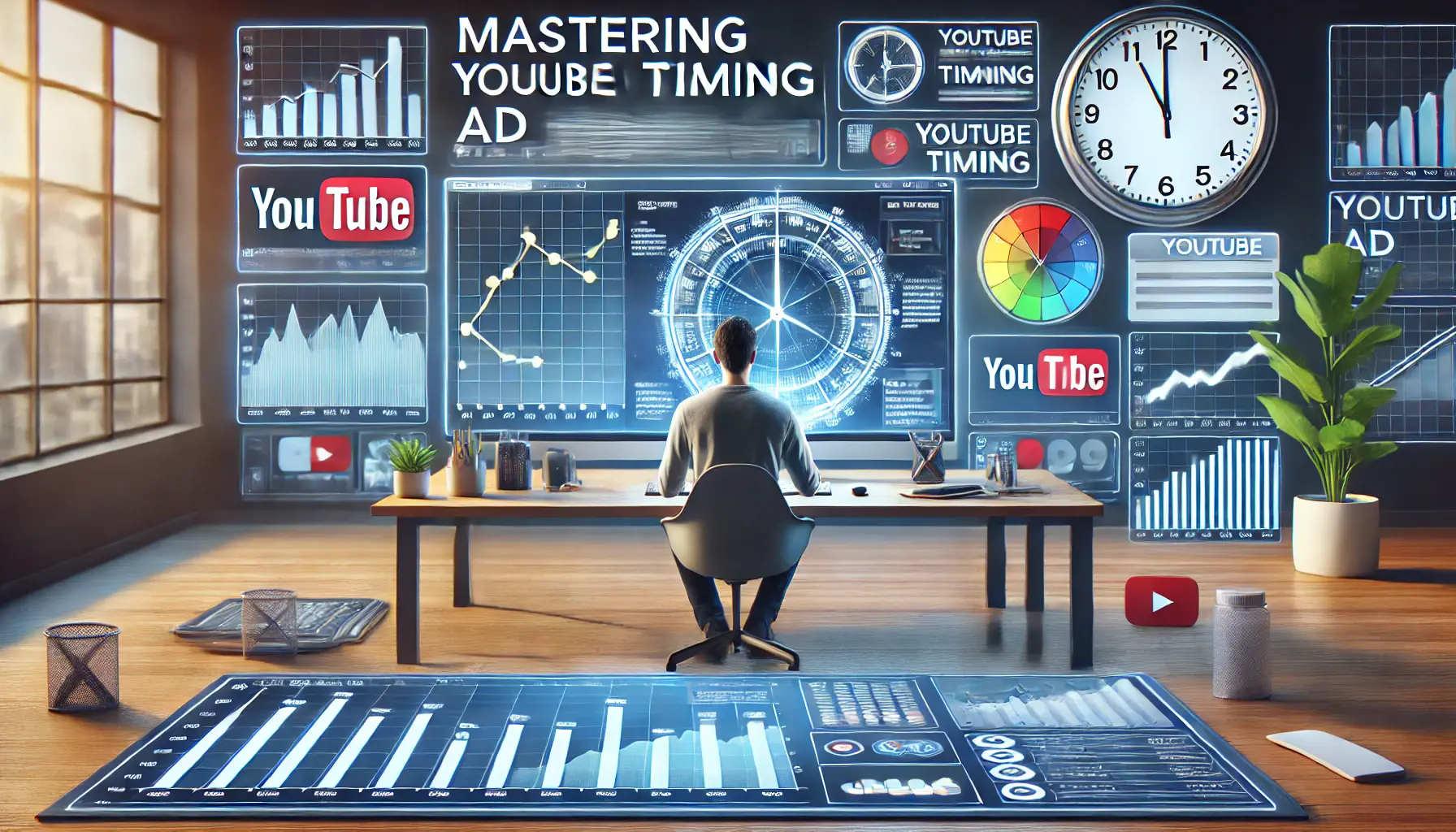
Illustration of mastering YouTube ad timing with strategic planning and analysis.
Mastering YouTube Ad Timing: Key Takeaways
Ad timing is unmistakably one of the most important variables that define the success rate of your YouTube campaigns.
By understanding audience behavior, leveraging analytics, and using strategic timing, you can significantly enhance ad engagement and achieve better results for your marketing campaigns.
Let’s recap the essential insights shared in this article to help you perfect your YouTube ad timing strategy.
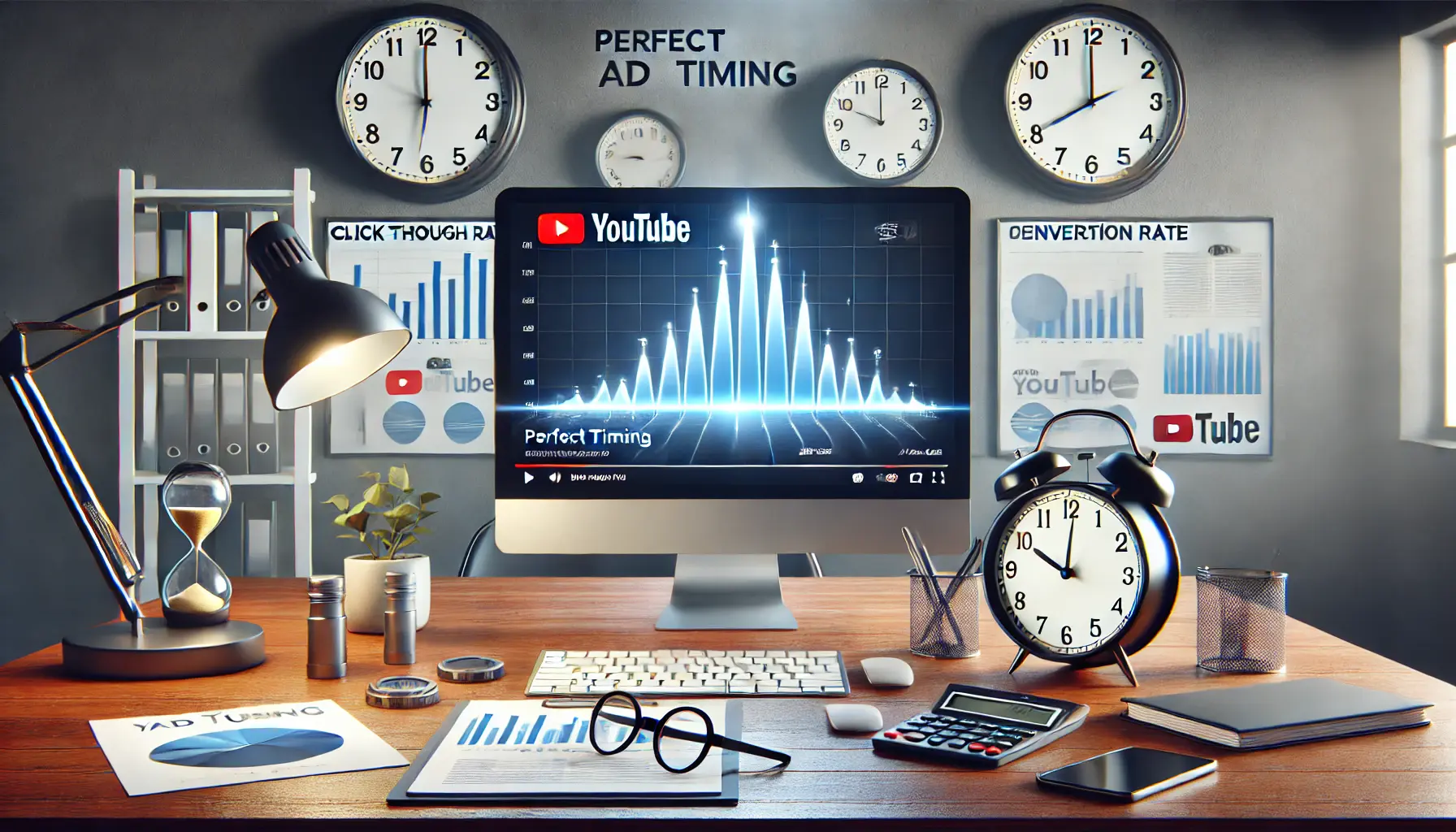
Illustration of why ad timing is crucial for YouTube campaigns.
Why Ad Timing Is Crucial
Ad timing can make or break your campaigns.
Whether you’re targeting weekday evenings or weekend afternoons, aligning your ads with peak engagement periods is critical for maximizing reach and impact.
Neglecting this aspect often leads to wasted budgets and underwhelming results.
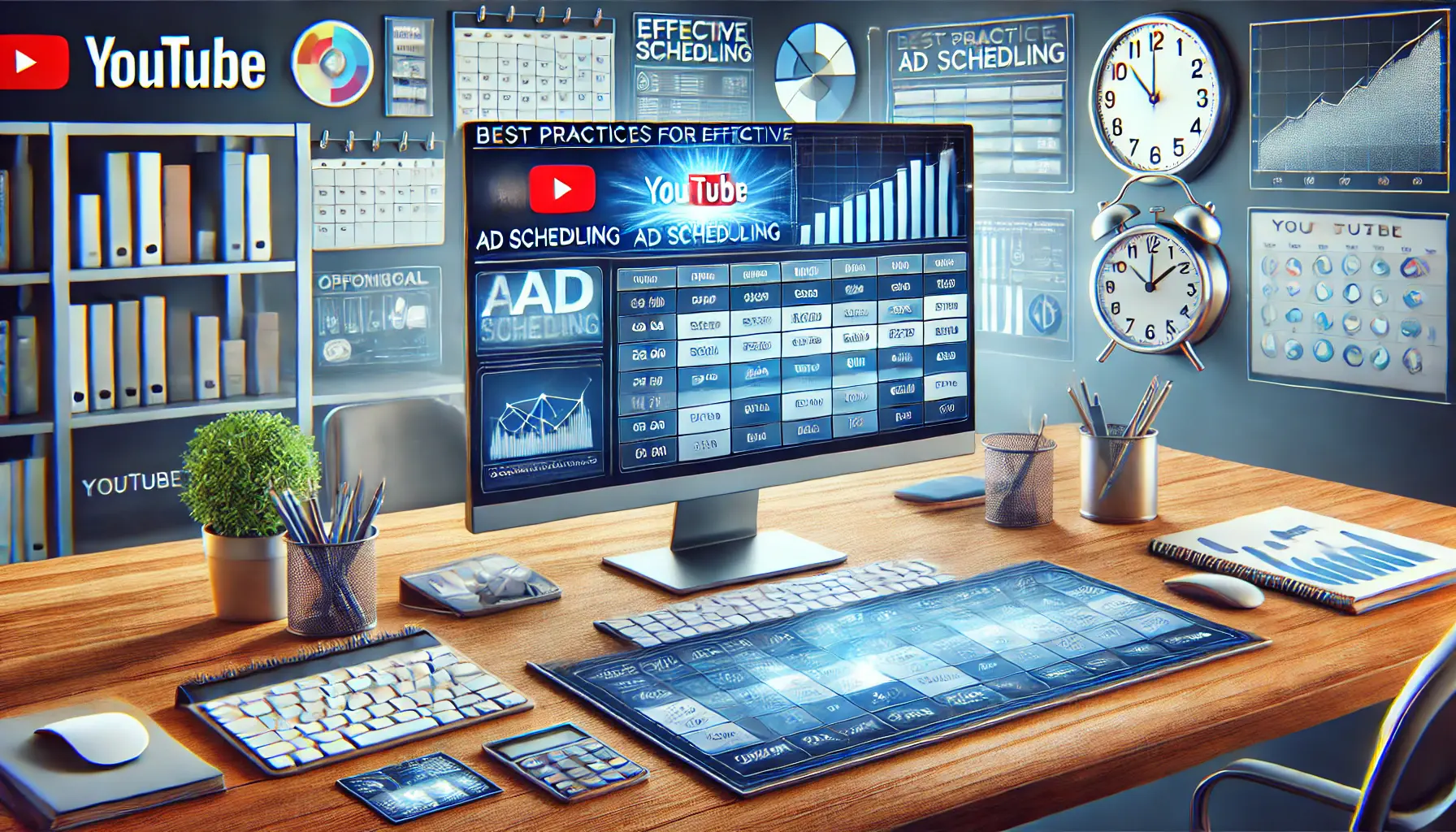
Illustration of best practices for effective ad scheduling in YouTube campaigns.
Best Practices for Effective Ad Scheduling
Throughout this article, we’ve highlighted several strategies to optimize your YouTube ad timing:
- Utilize Analytics: Leverage tools like YouTube Analytics and Google Ads reports to identify high-performing time slots.
- Incorporate Dayparting: Focus on specific time frames to ensure your ads reach the audience when they are most receptive.
- Adapt to Trends: Stay informed about platform-specific trends, seasonal behaviors, and viewer habits to fine-tune your campaigns.
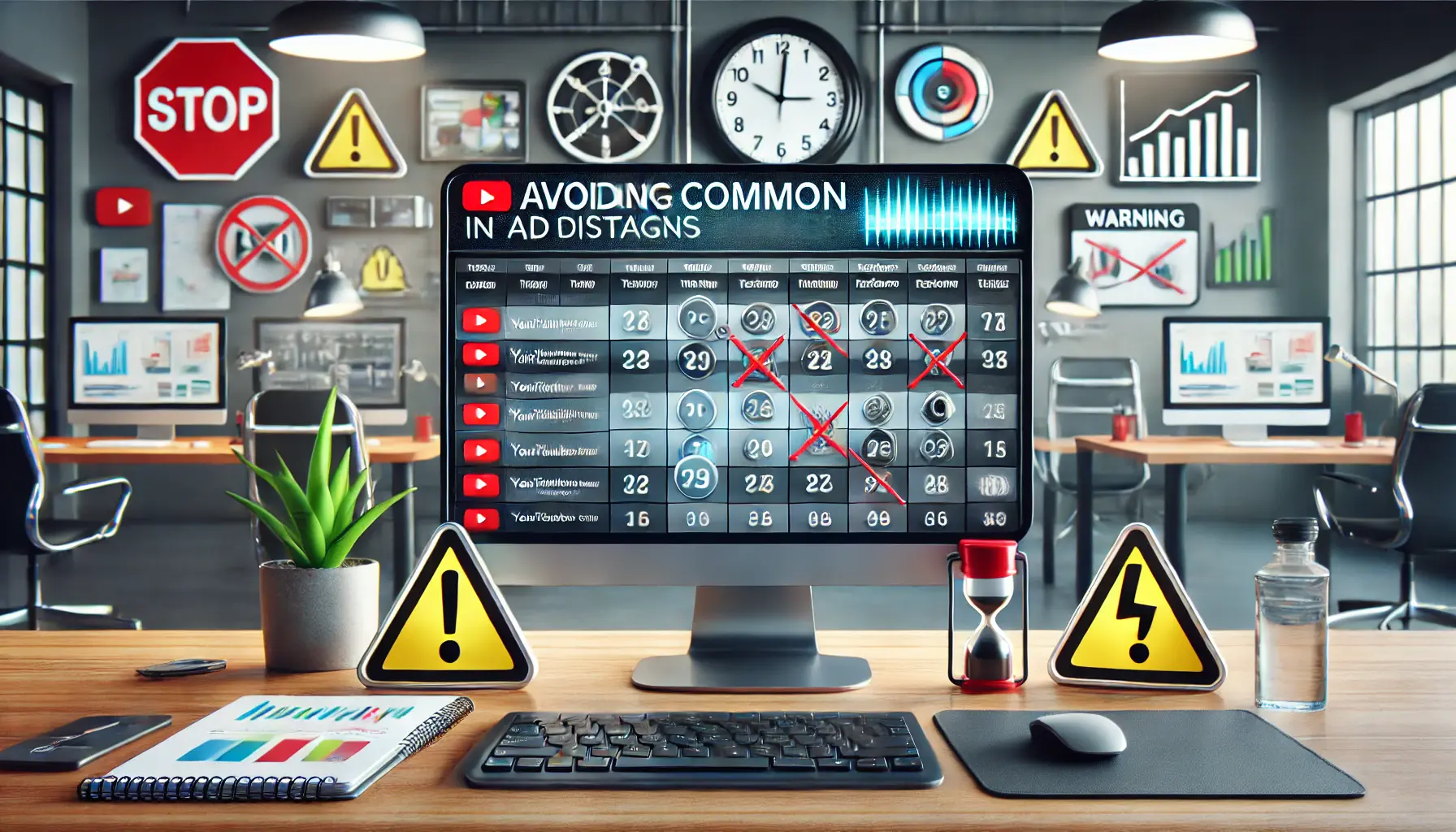
Illustration of avoiding common pitfalls in YouTube ad campaigns.
Avoiding Common Pitfalls
Recognizing and avoiding common mistakes can save you from wasted effort and resources.
Key pitfalls to avoid include:
- Relying on generic timing assumptions instead of data-driven insights.
- Ignoring audience behavior and platform-specific trends.
- Failing to adapt to changes in viewer behavior over time.
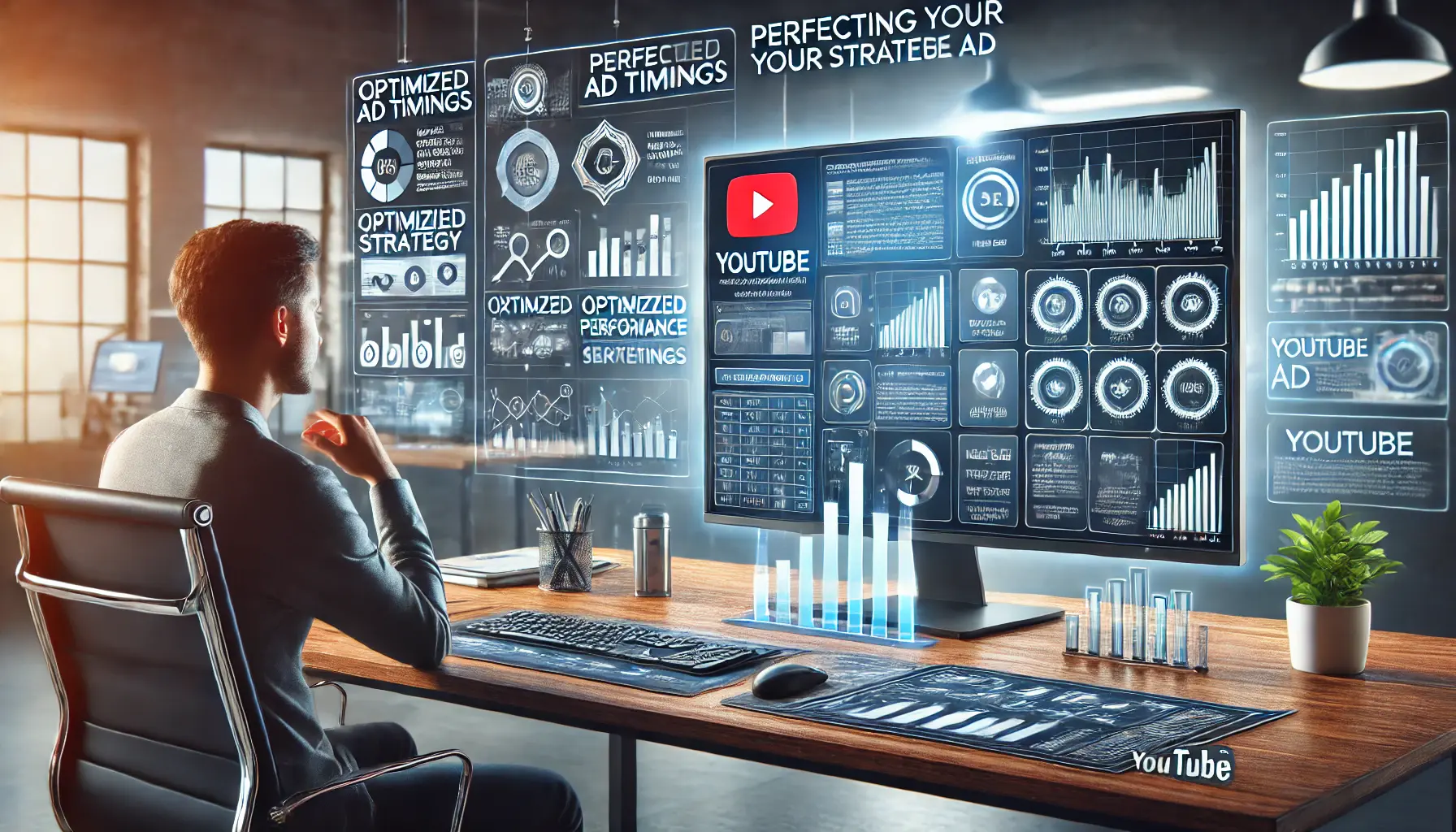
Illustration of final thoughts on perfecting your YouTube ad strategy.
Final Thoughts on Perfecting Your Strategy
Mastering ad timing on YouTube requires a combination of thoughtful planning, data-driven decisions, and continuous adaptation.
By applying all the tips and strategies outlined in this article, you can ensure that your ads are seen by the right audience at the right time, maximizing engagement and ROI.
As you refine your approach, remember that ad timing is not a one-size-fits-all solution.
Regularly revisit your analytics, stay attuned to audience preferences, and adapt your strategy to maintain optimal performance.
With these practices in place, your YouTube campaigns are set to achieve unparalleled success.
- Analyze audience habits for precise timing.
- Utilize Google Ads tools like dayparting and analytics.
- Avoid relying on generic assumptions.
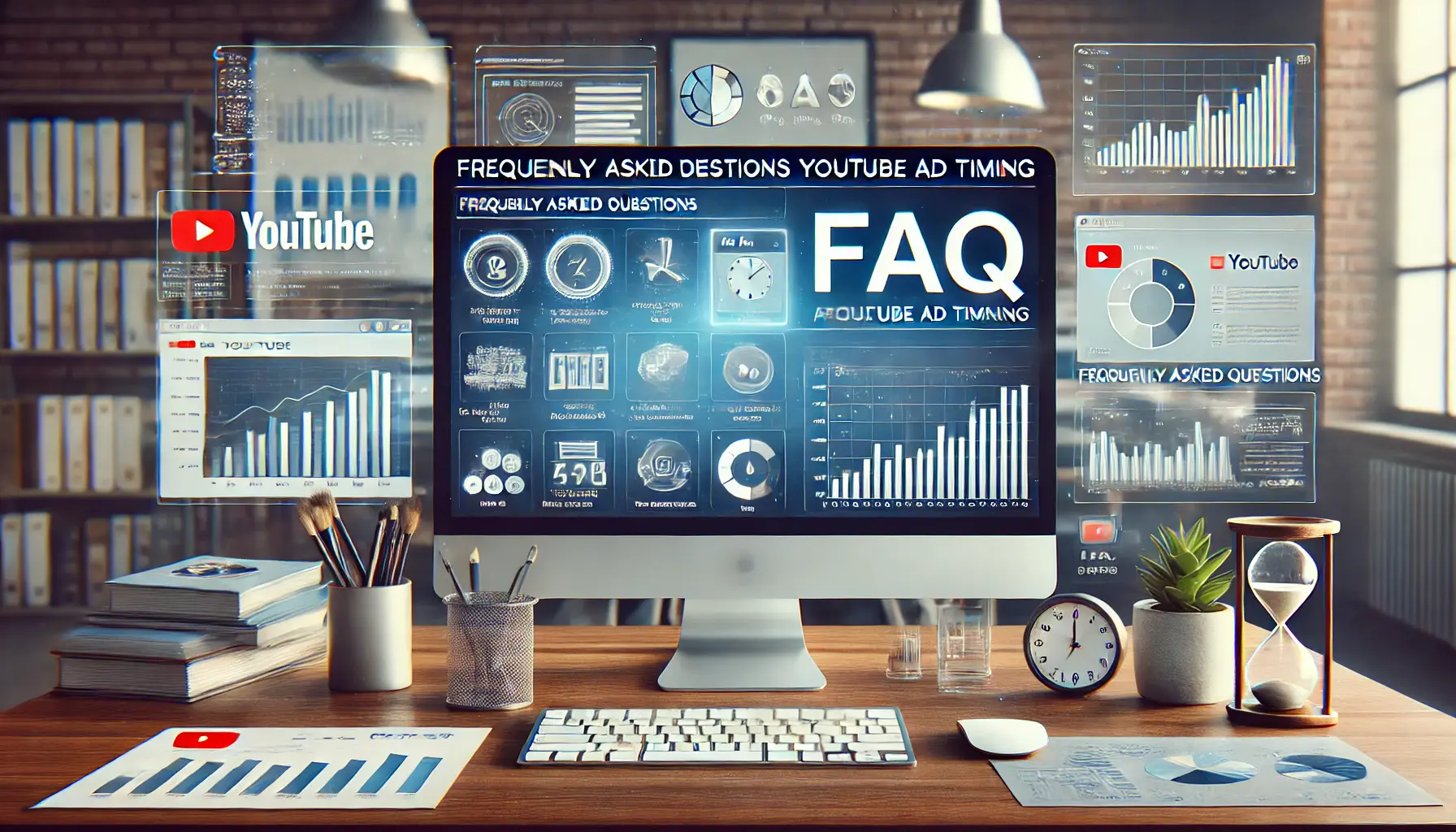
undefined
Your campaigns can be managed by an agency specialized in Google Ads, check out our service page.
Frequently Asked Questions About YouTube Ad Timing
Ad timing is a very important part of YouTube campaigns.
Below are some of the most common questions and answers to help you better understand and apply effective ad timing strategies for your campaigns.
The best time depends on your target audience.
Typically, weekday evenings, weekend afternoons, and early mornings show high engagement, but analyzing your audience’s habits is essential for precise timing.
YouTube Analytics helps track audience behavior, such as peak viewing times and demographics.
Use these insights to align your ad schedule with when viewers are most active and engaged for better performance.
Dayparting allows you to schedule ads during specific times of the day or days of the week.
It helps optimize ad spend by targeting viewers when they are most likely to engage with your content.
Regular reviews are essential, ideally every few weeks.
Analyze performance data and adapt your strategy to changes in viewer behavior, seasonal trends, and platform updates for optimal results.
